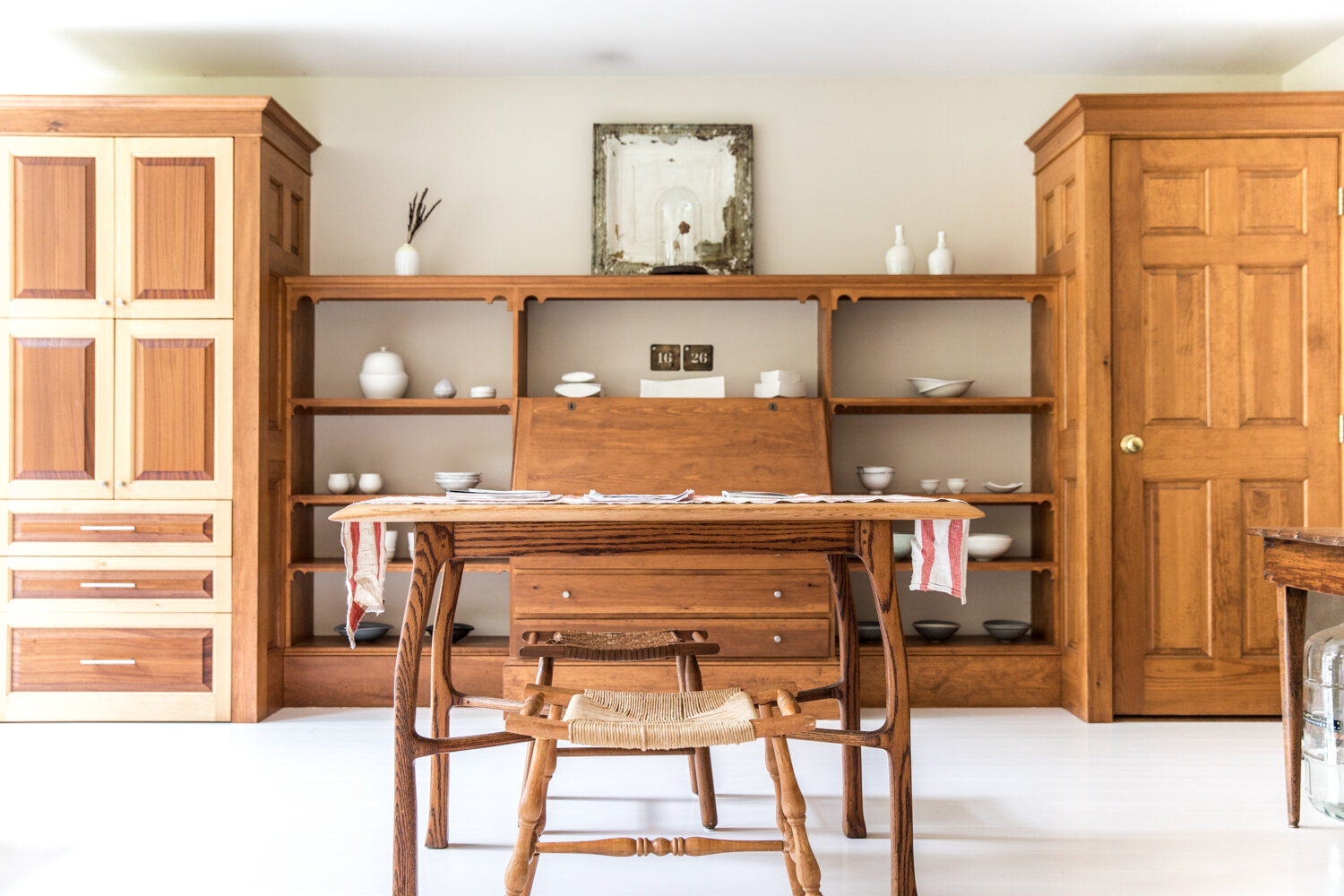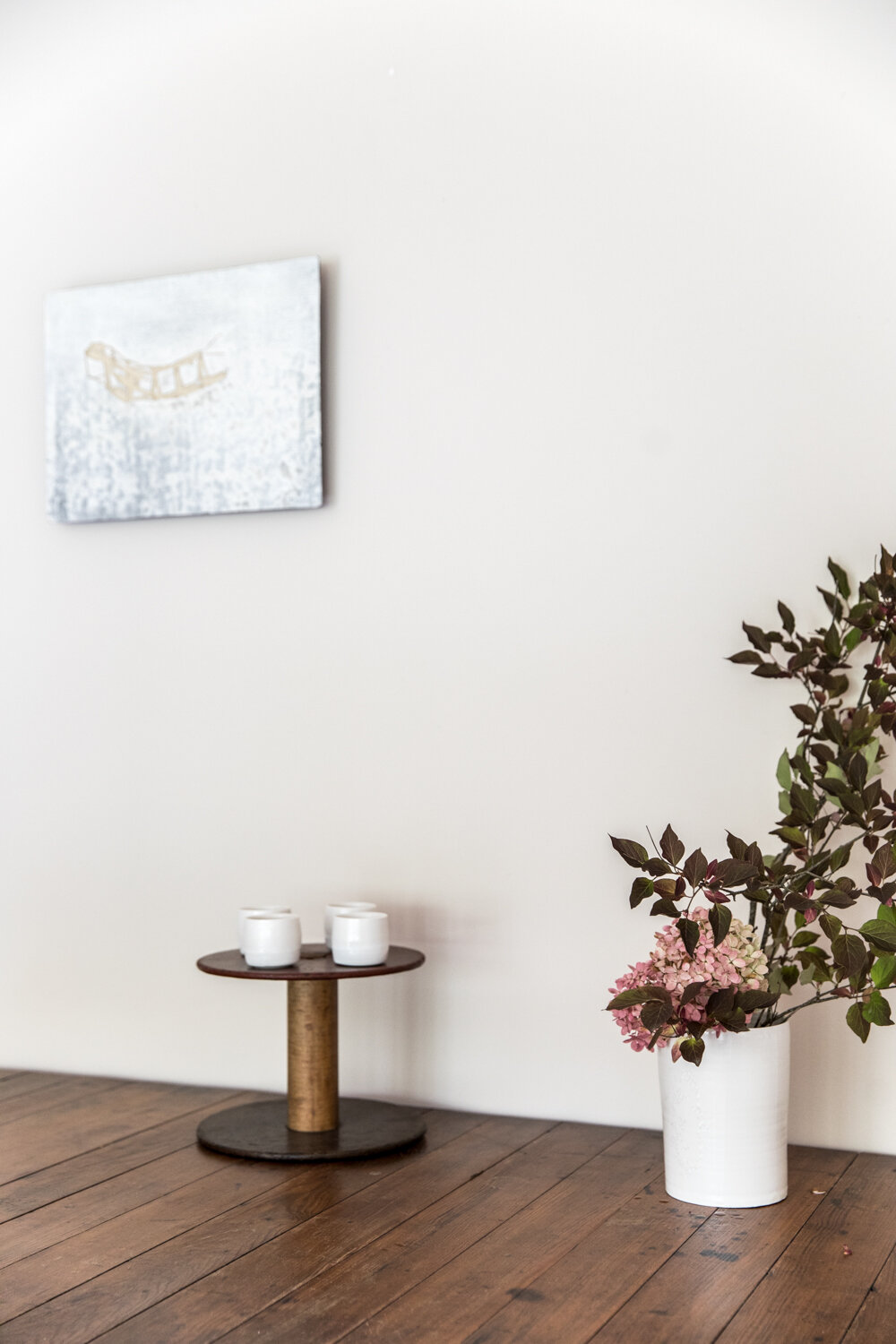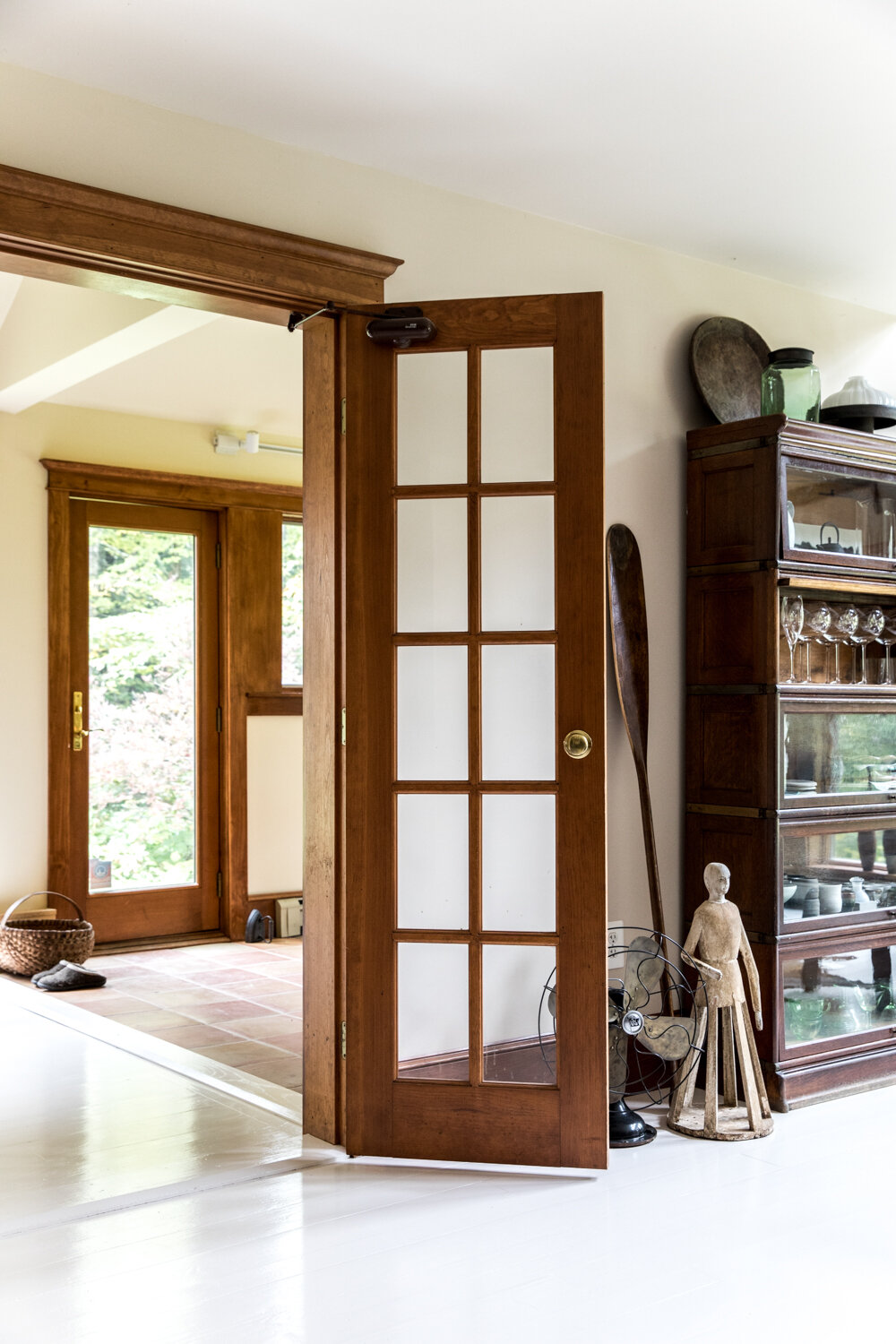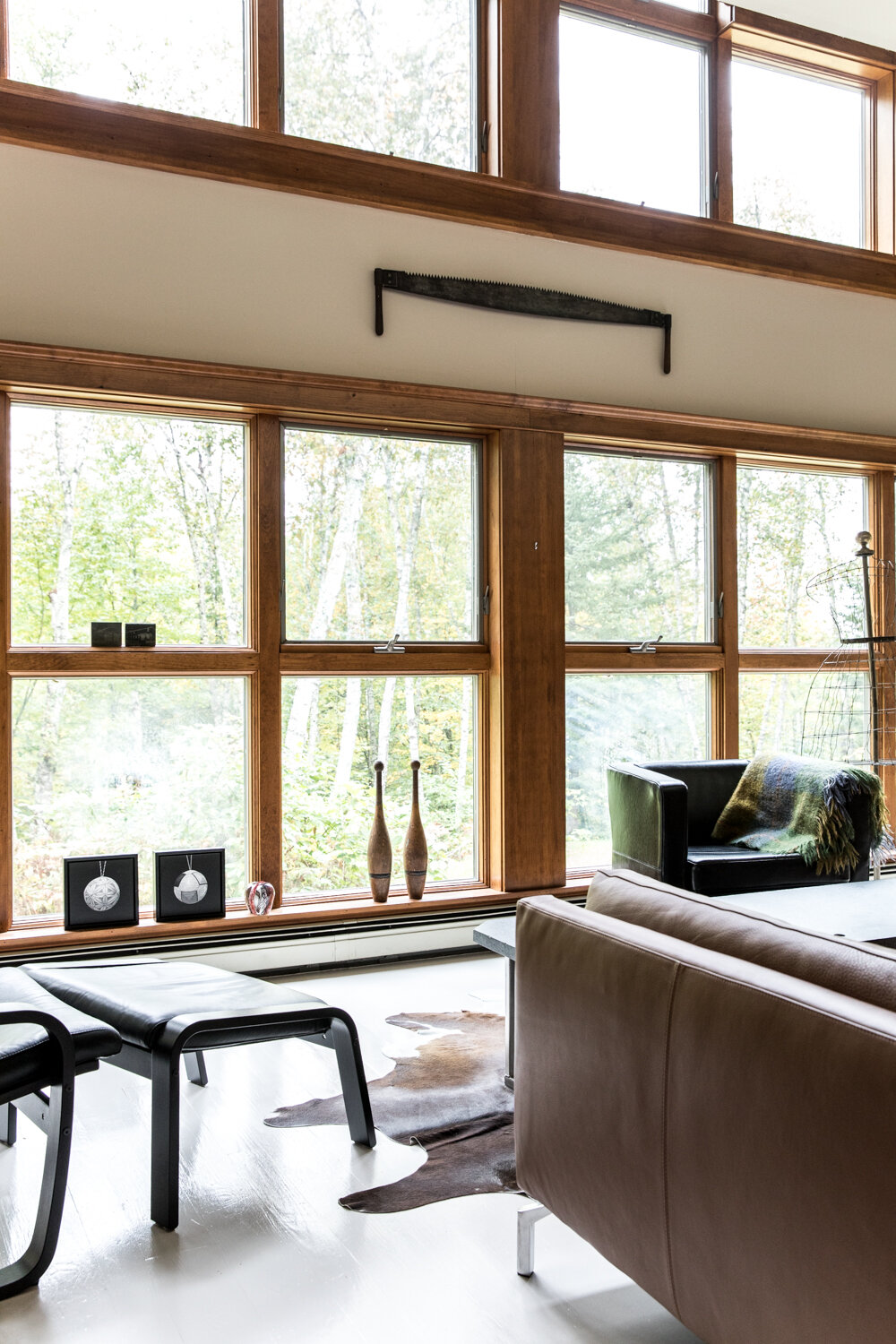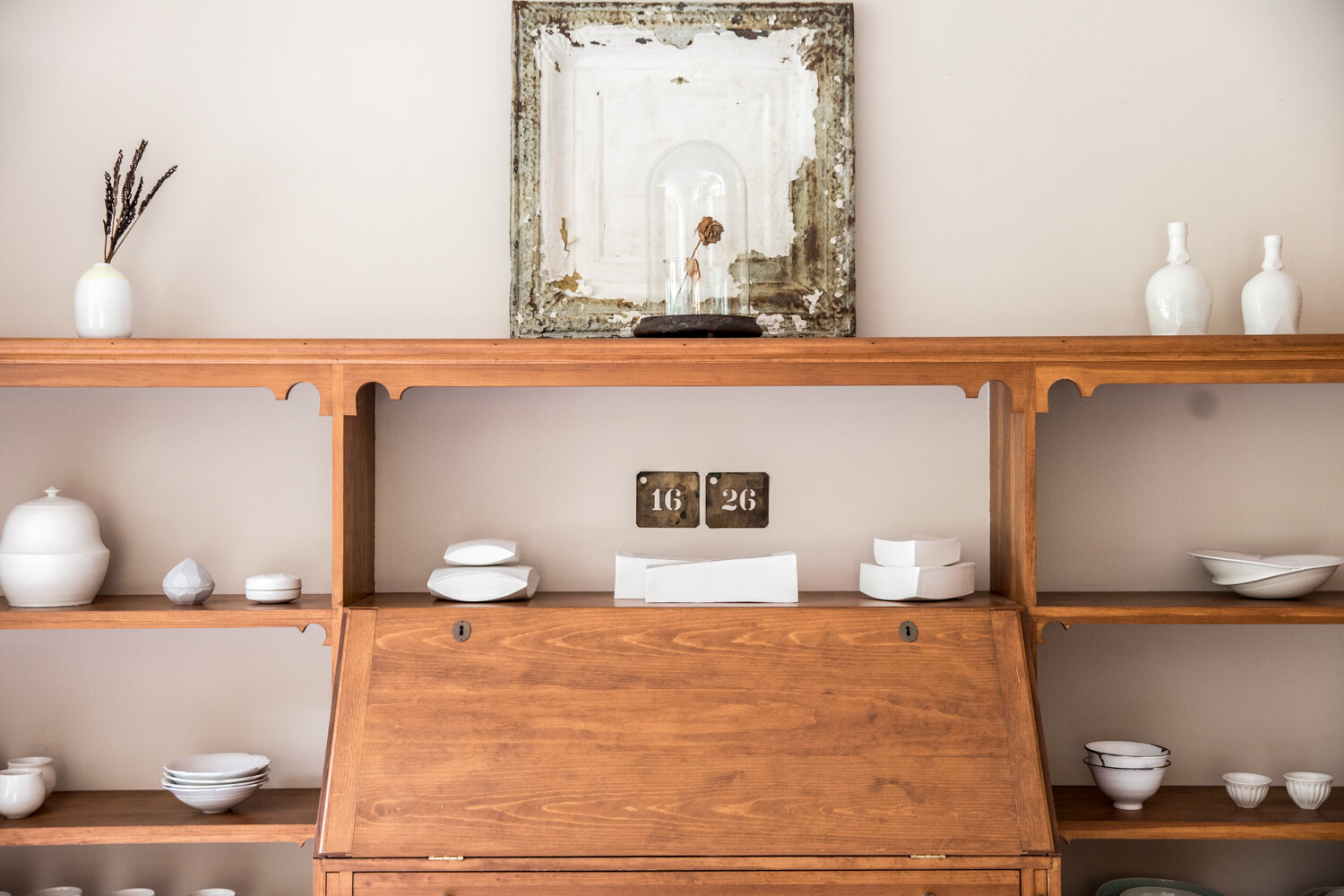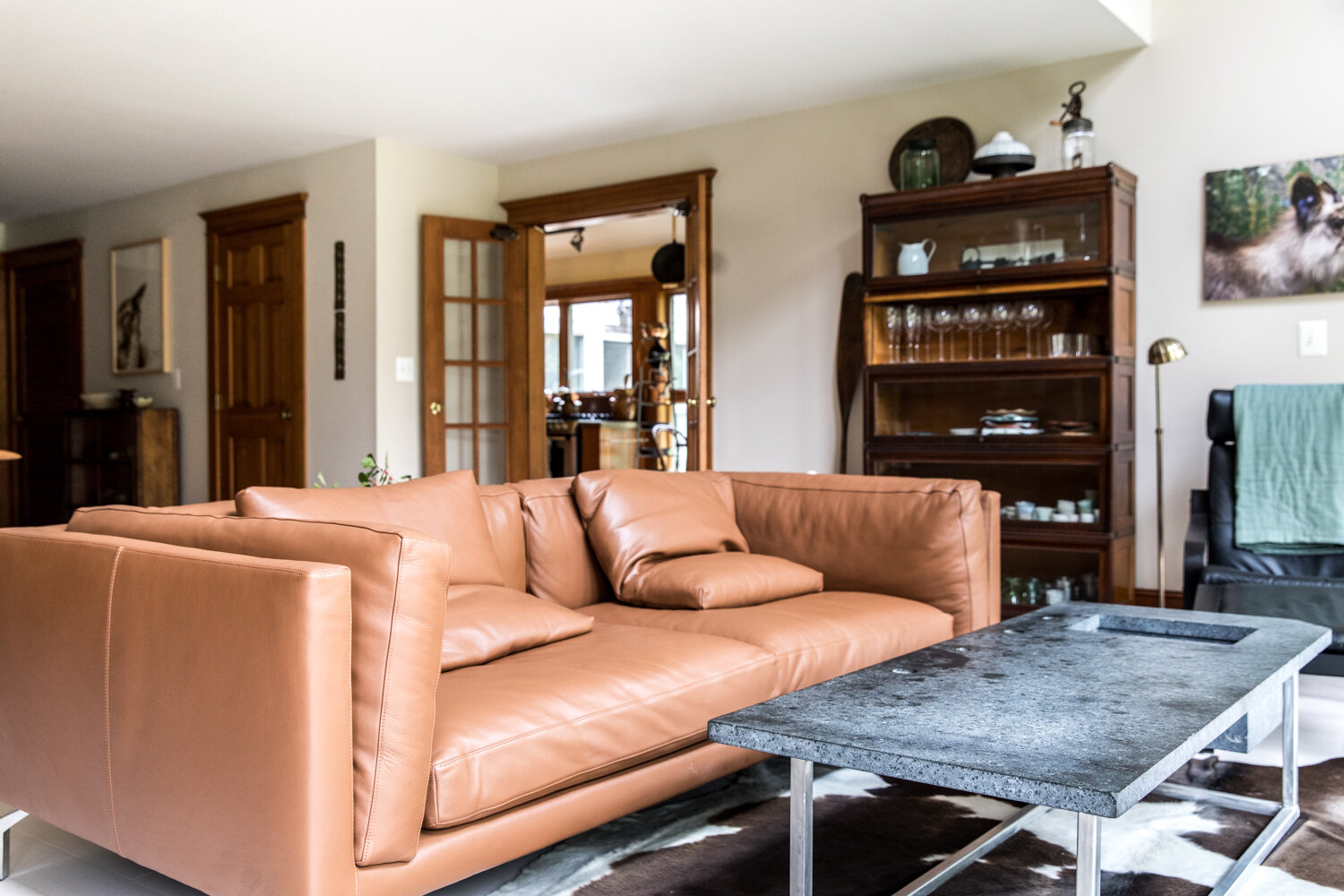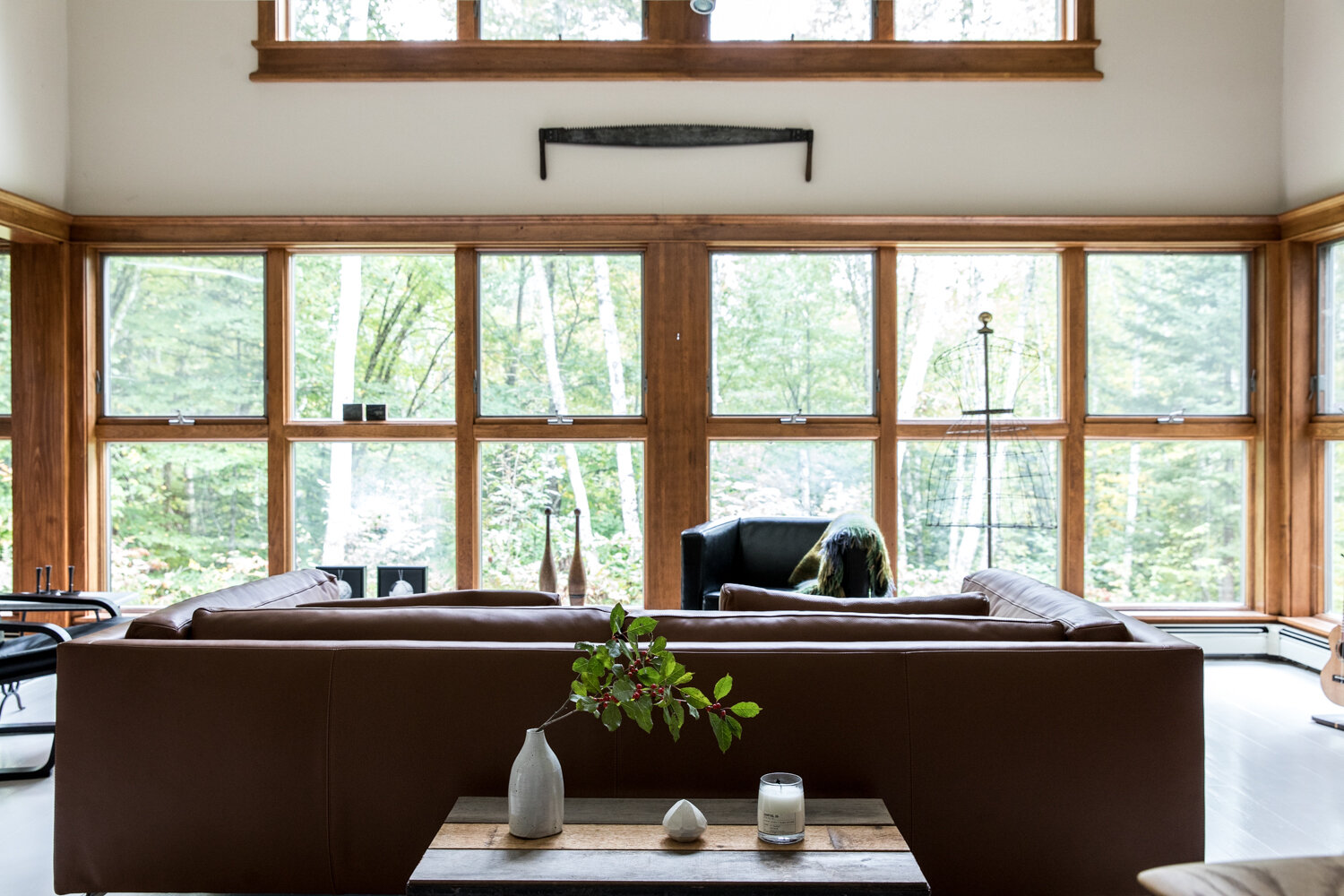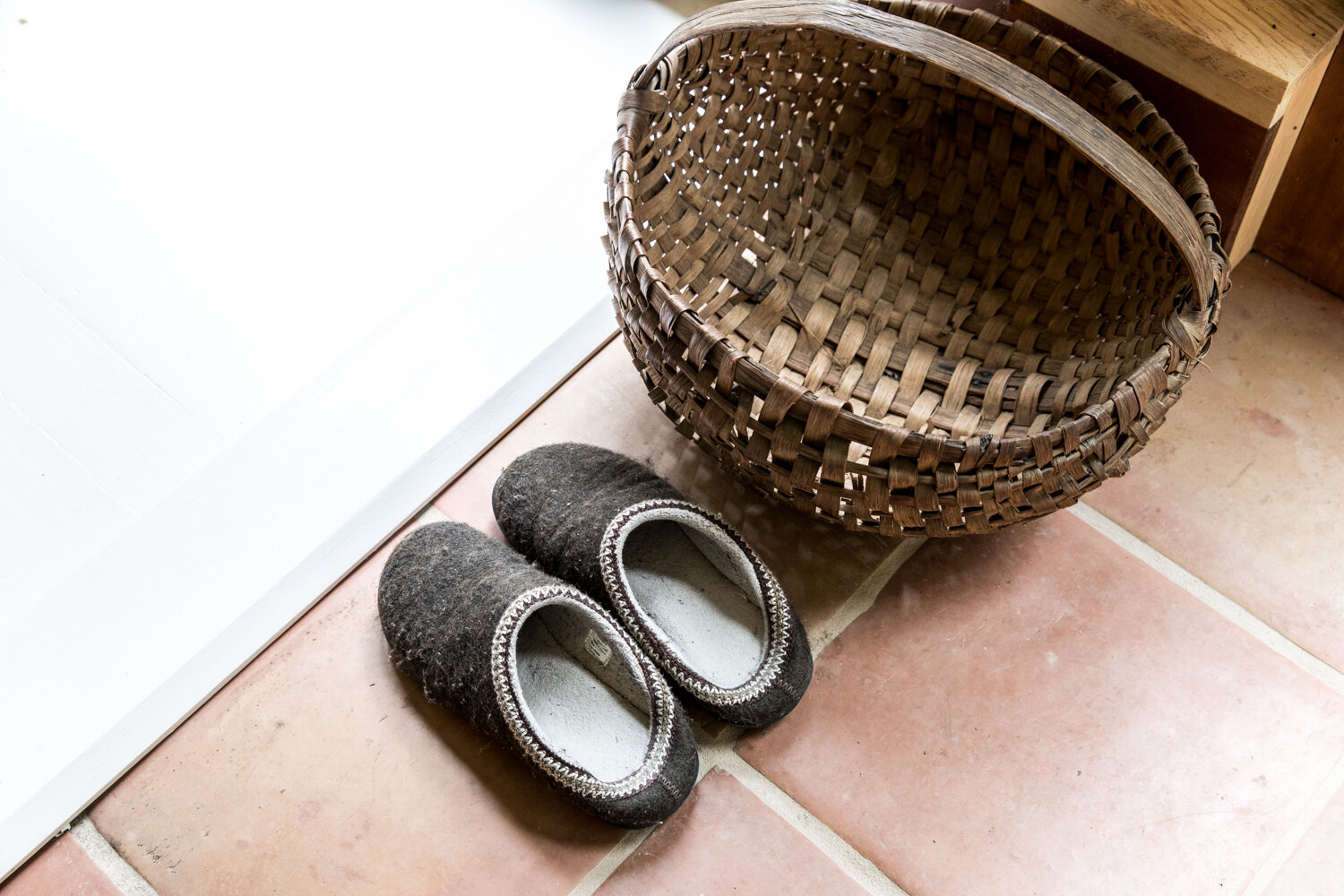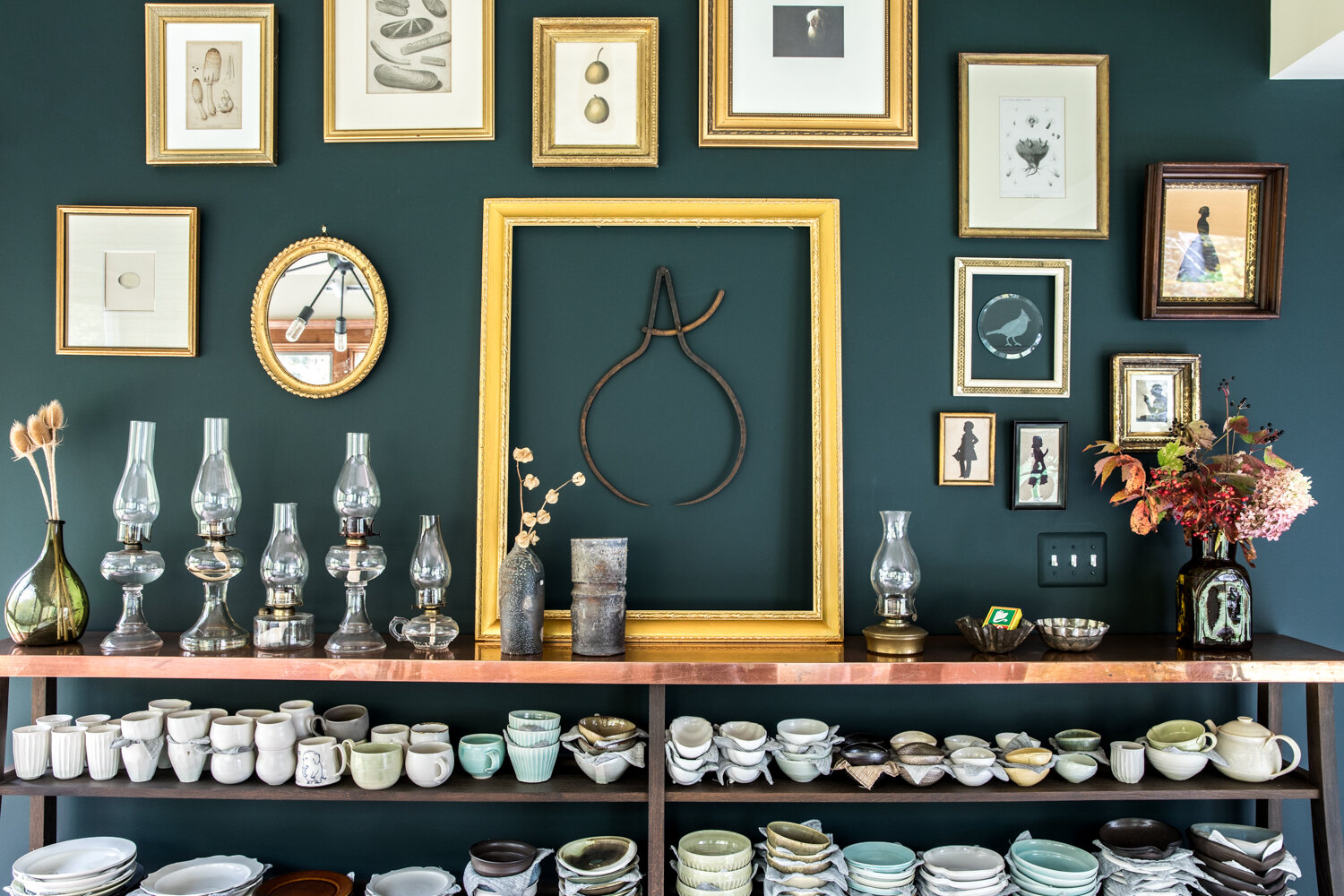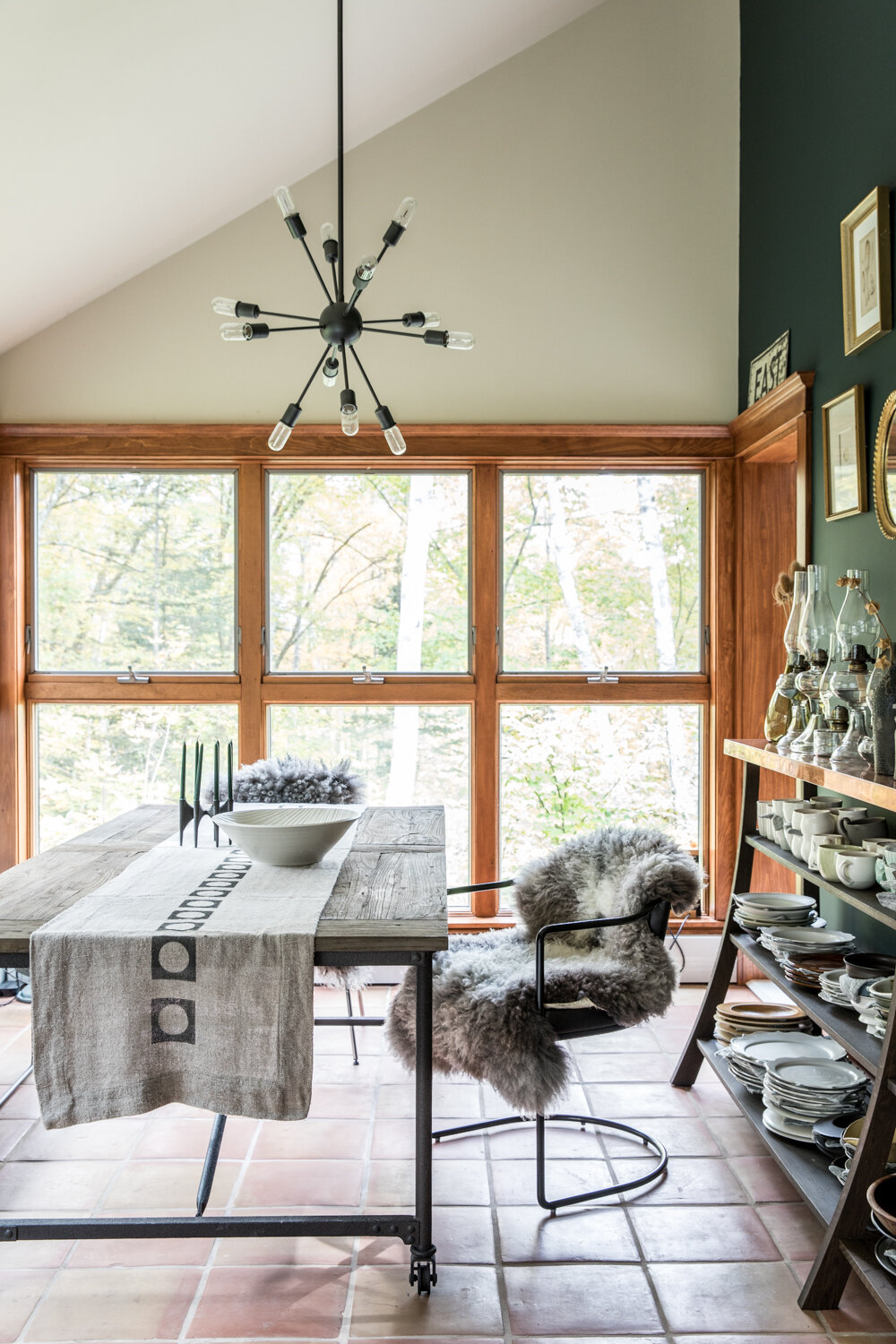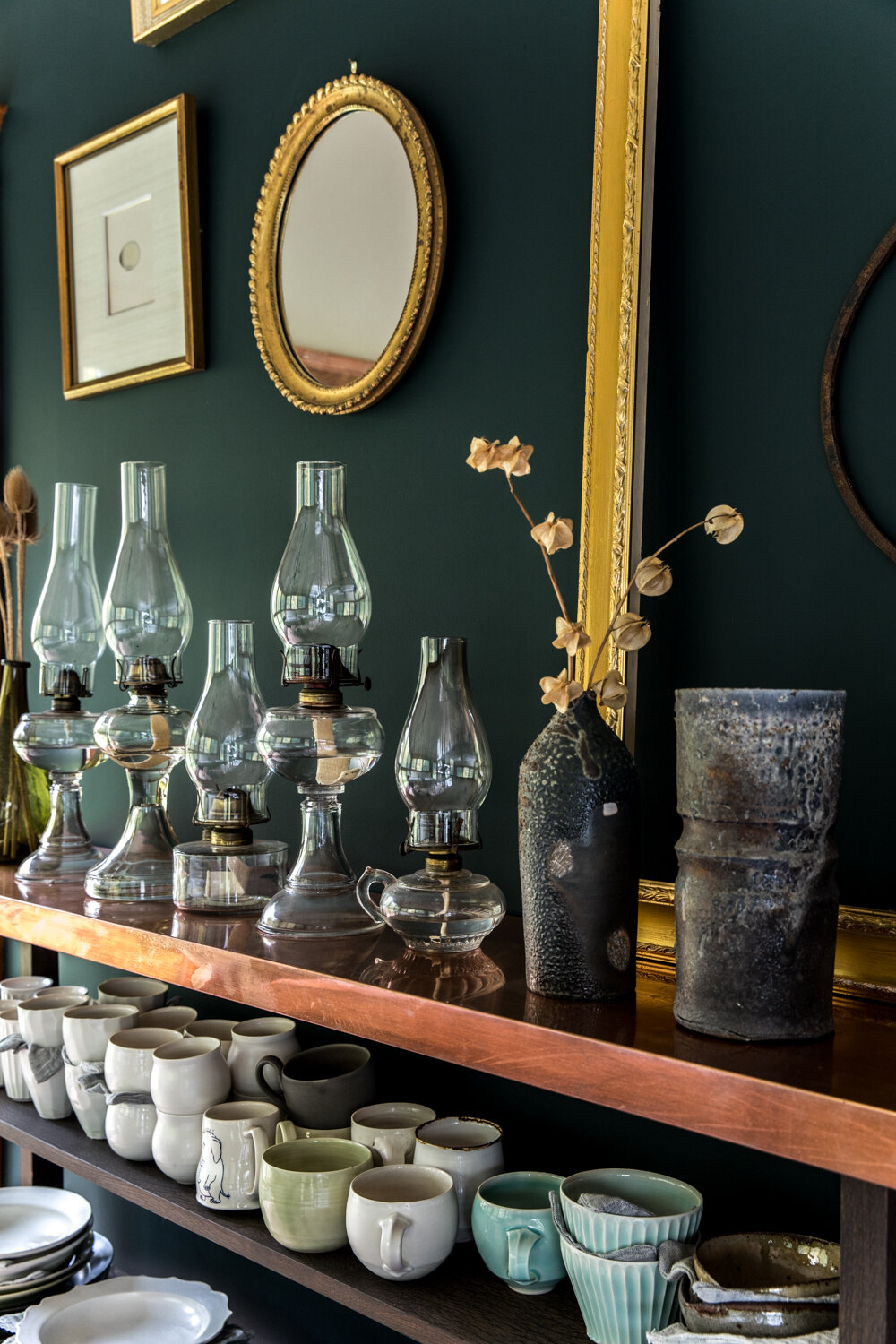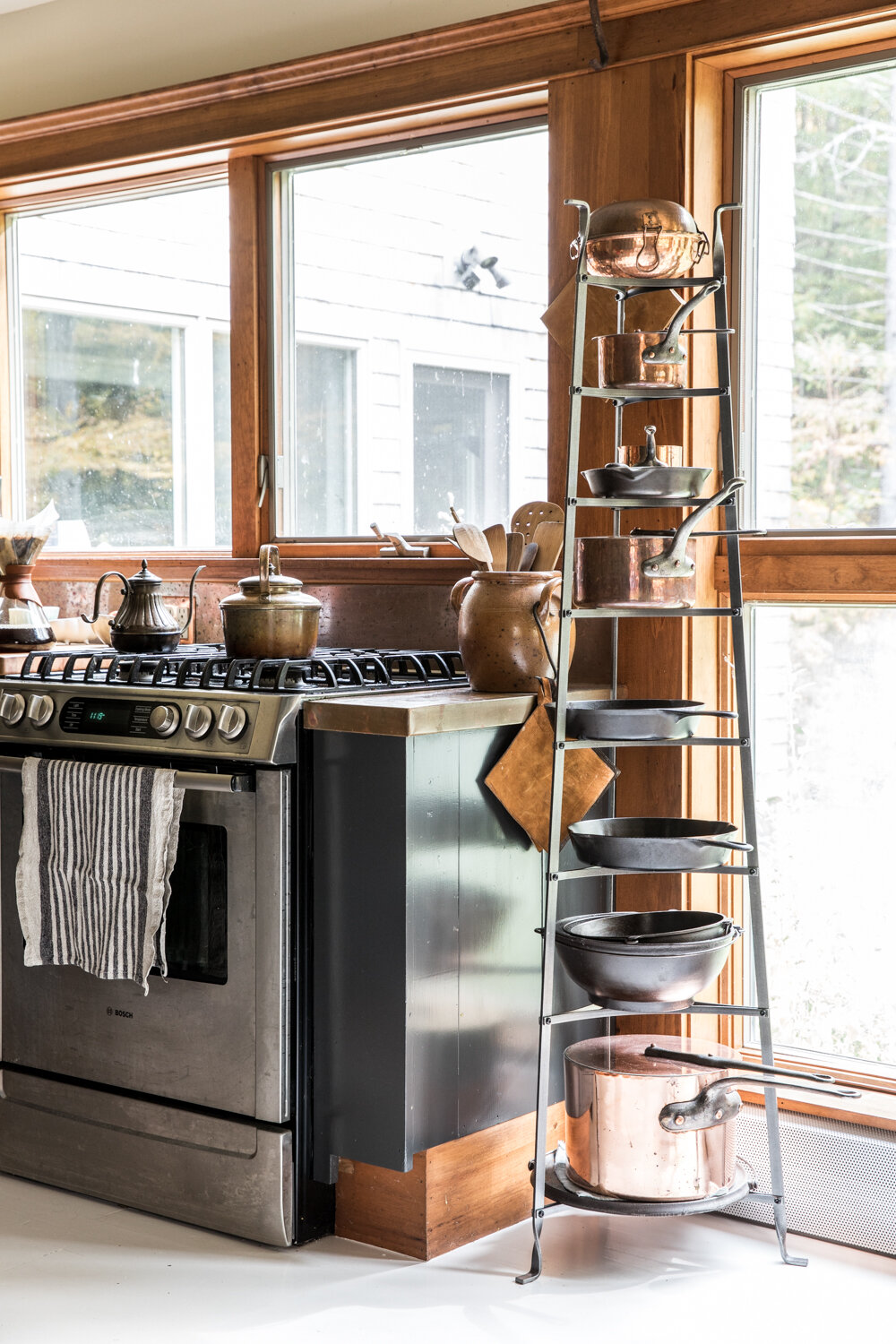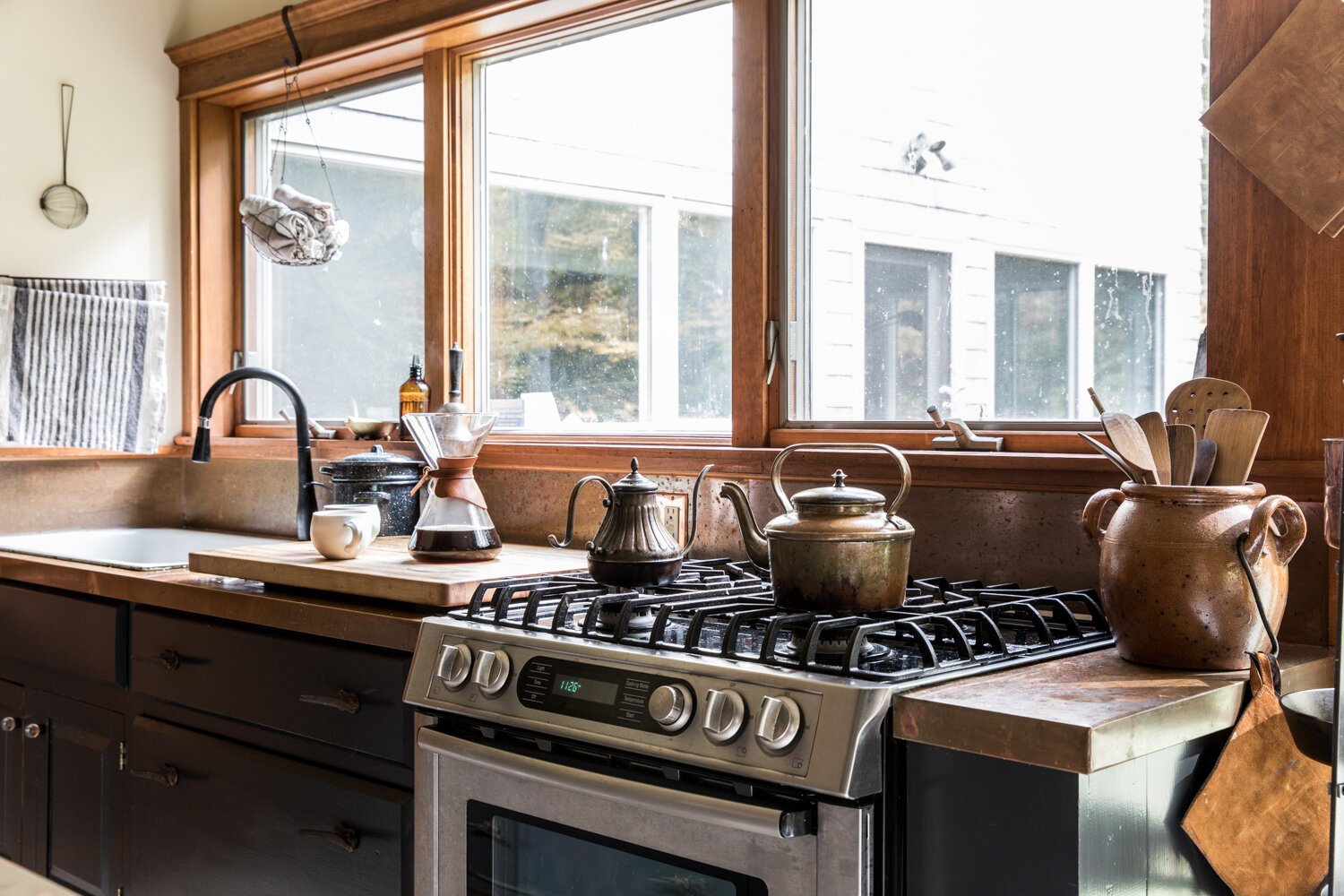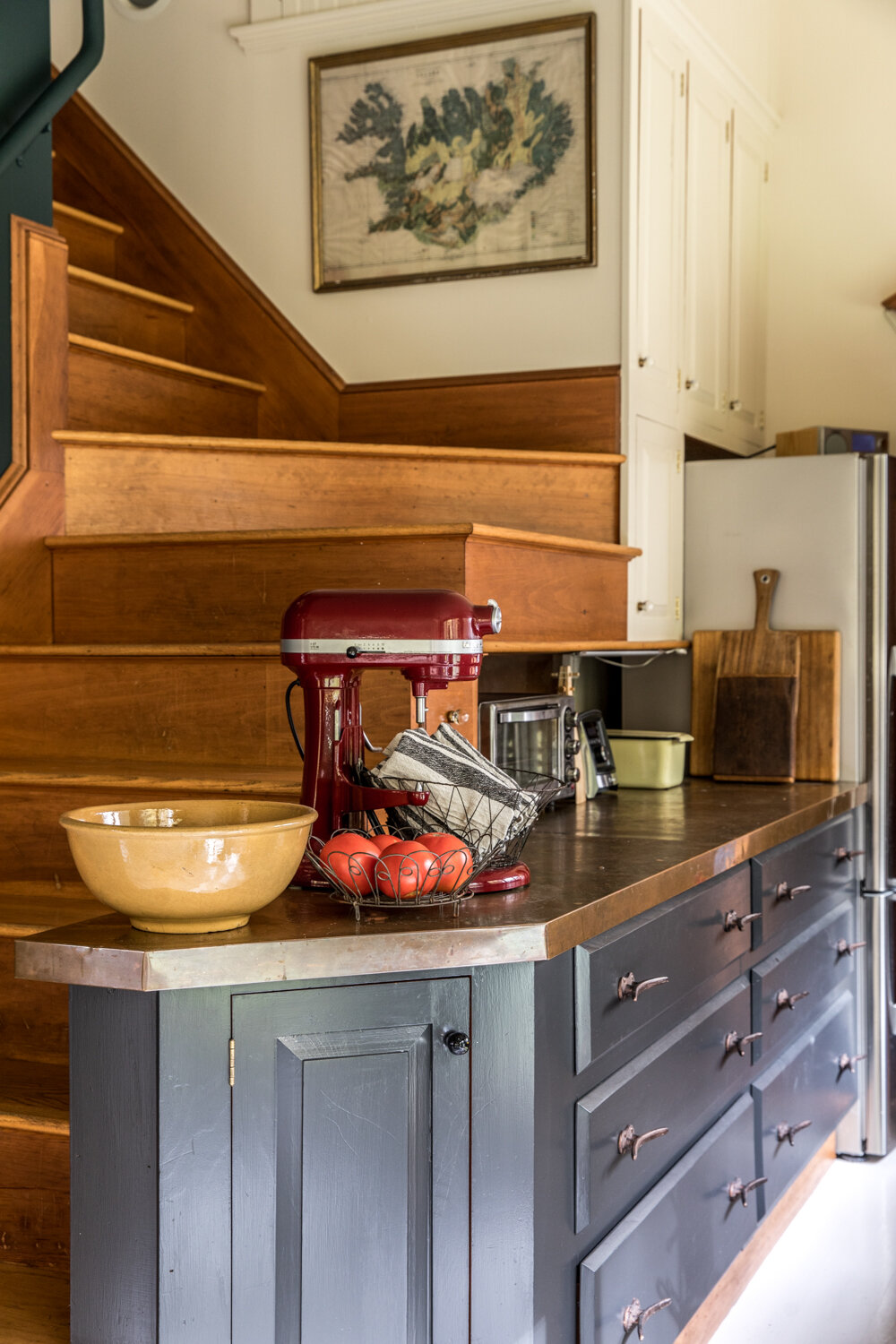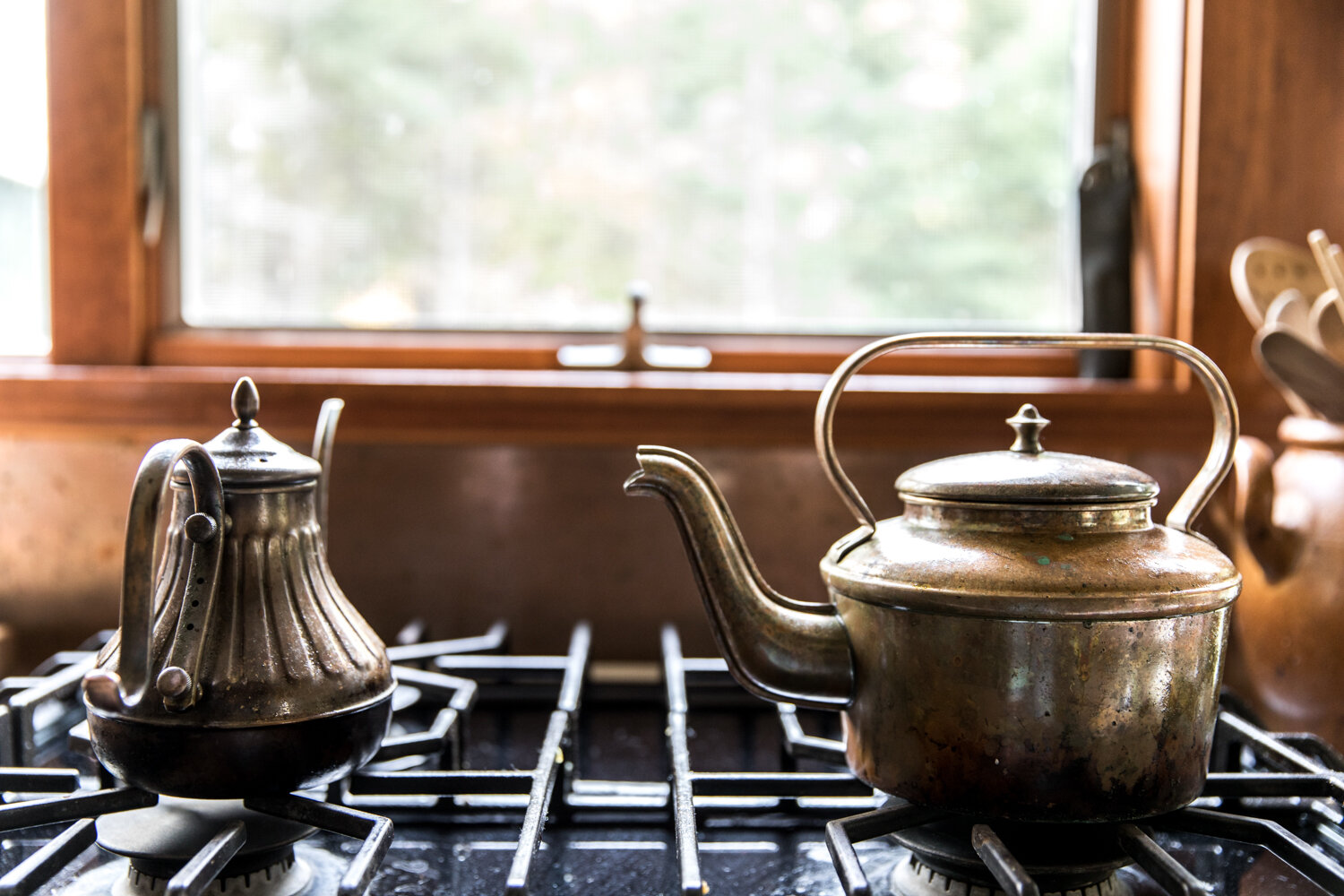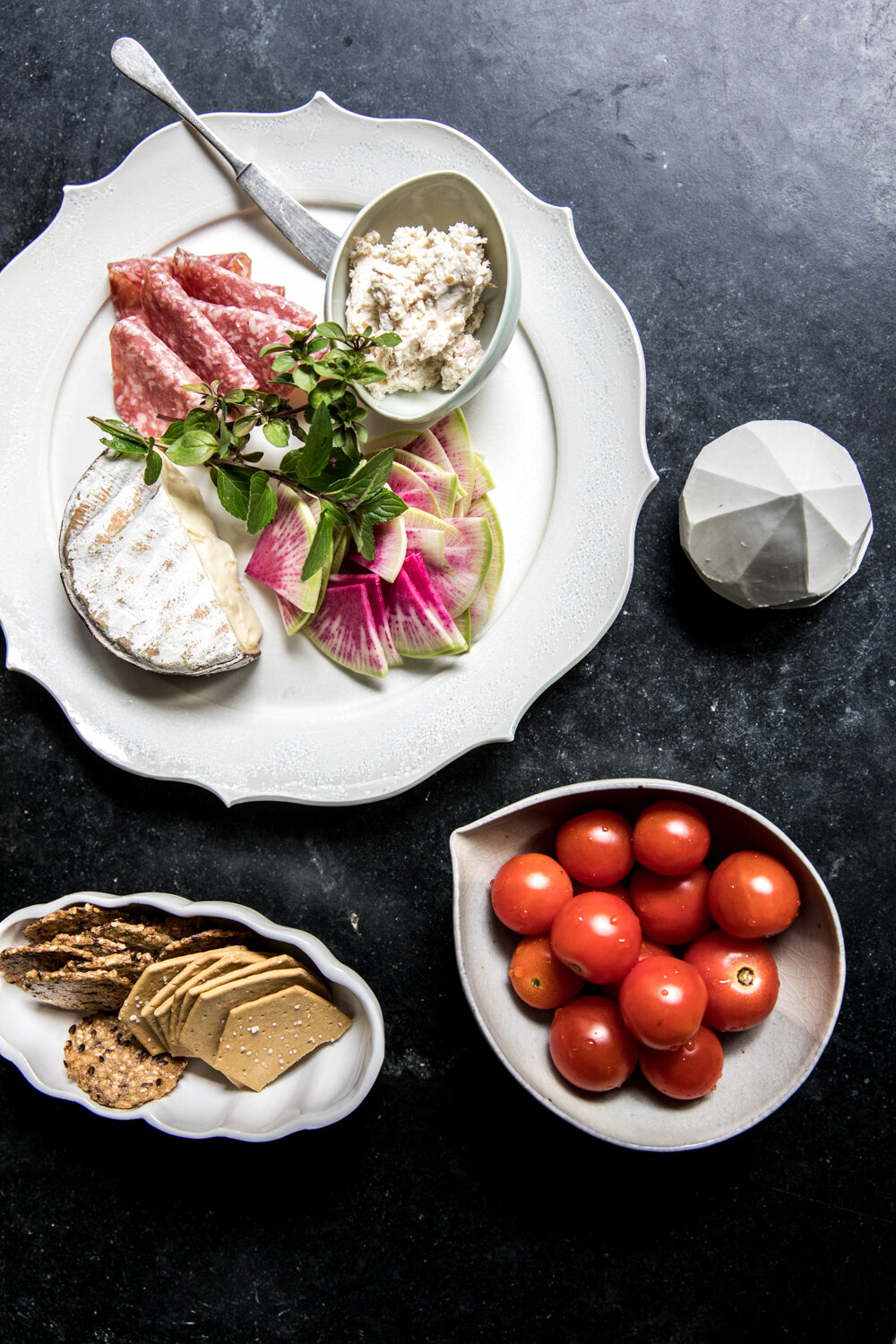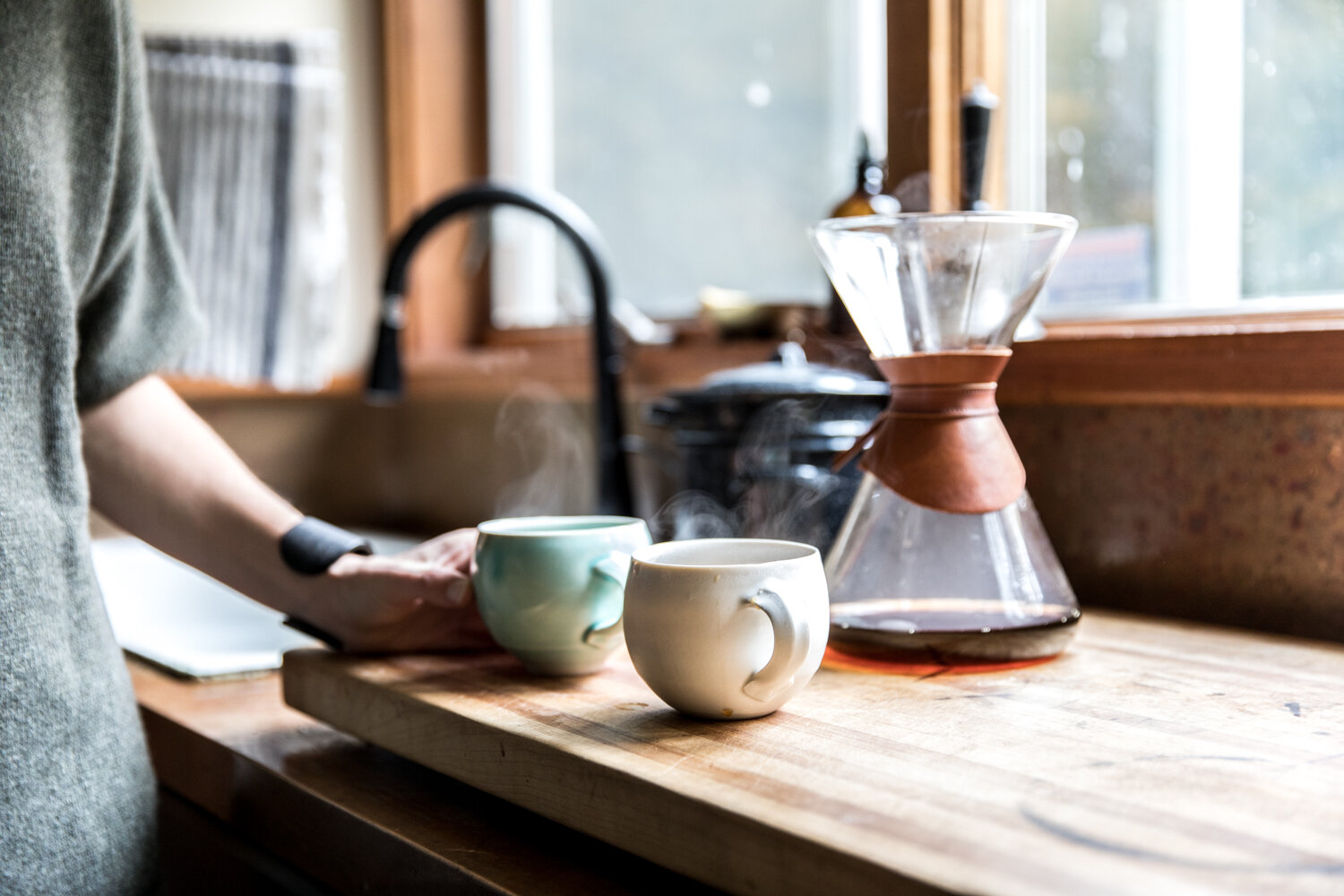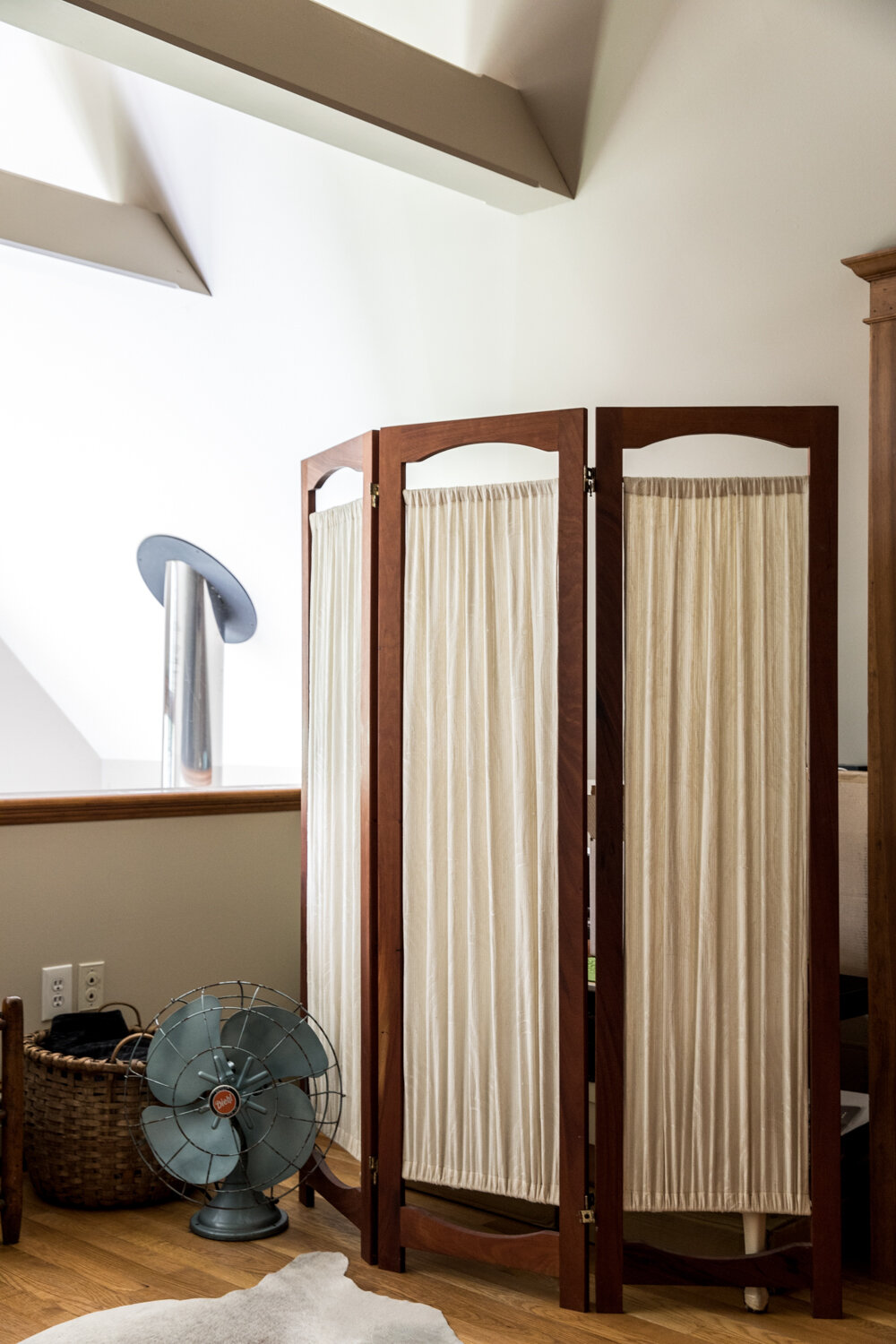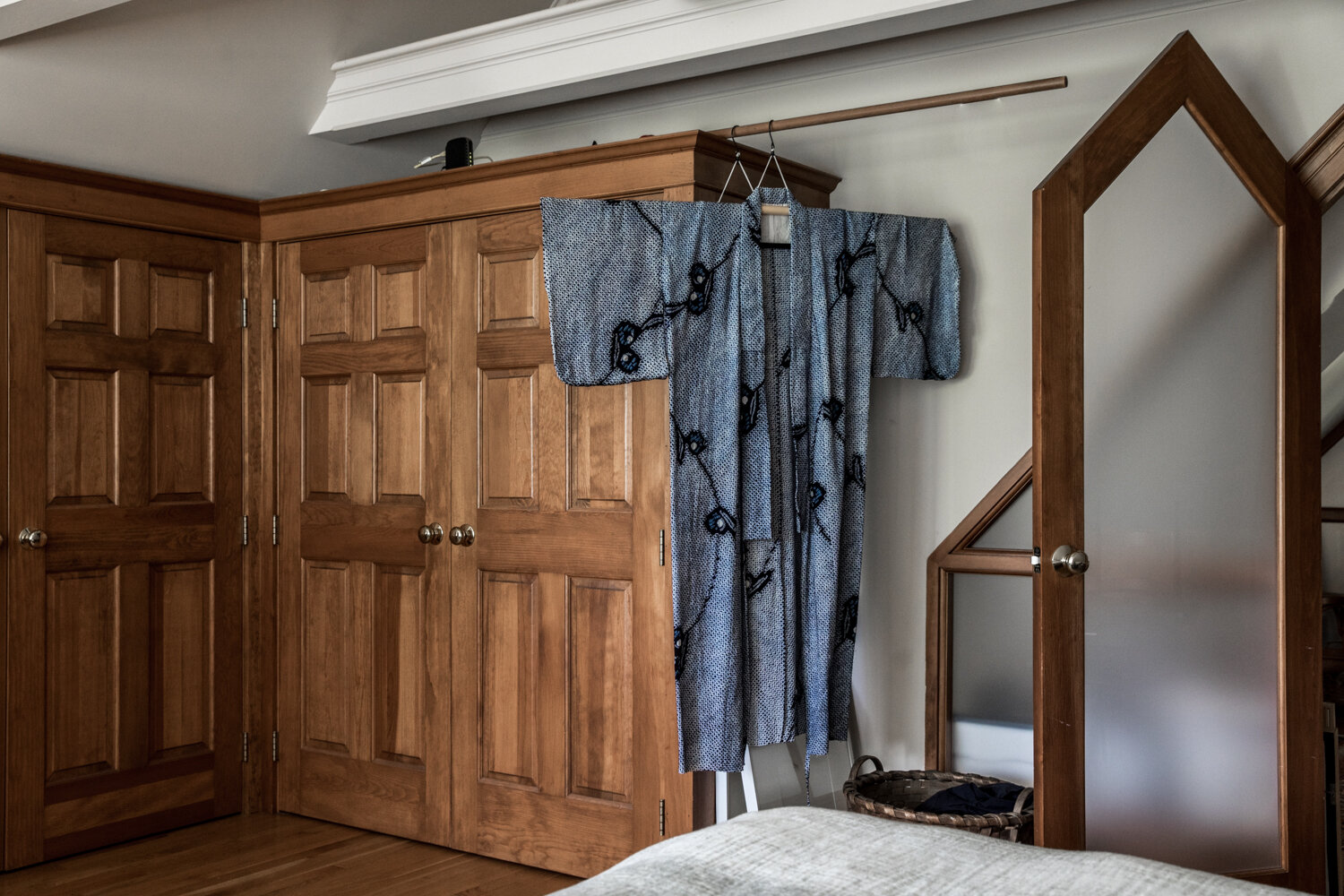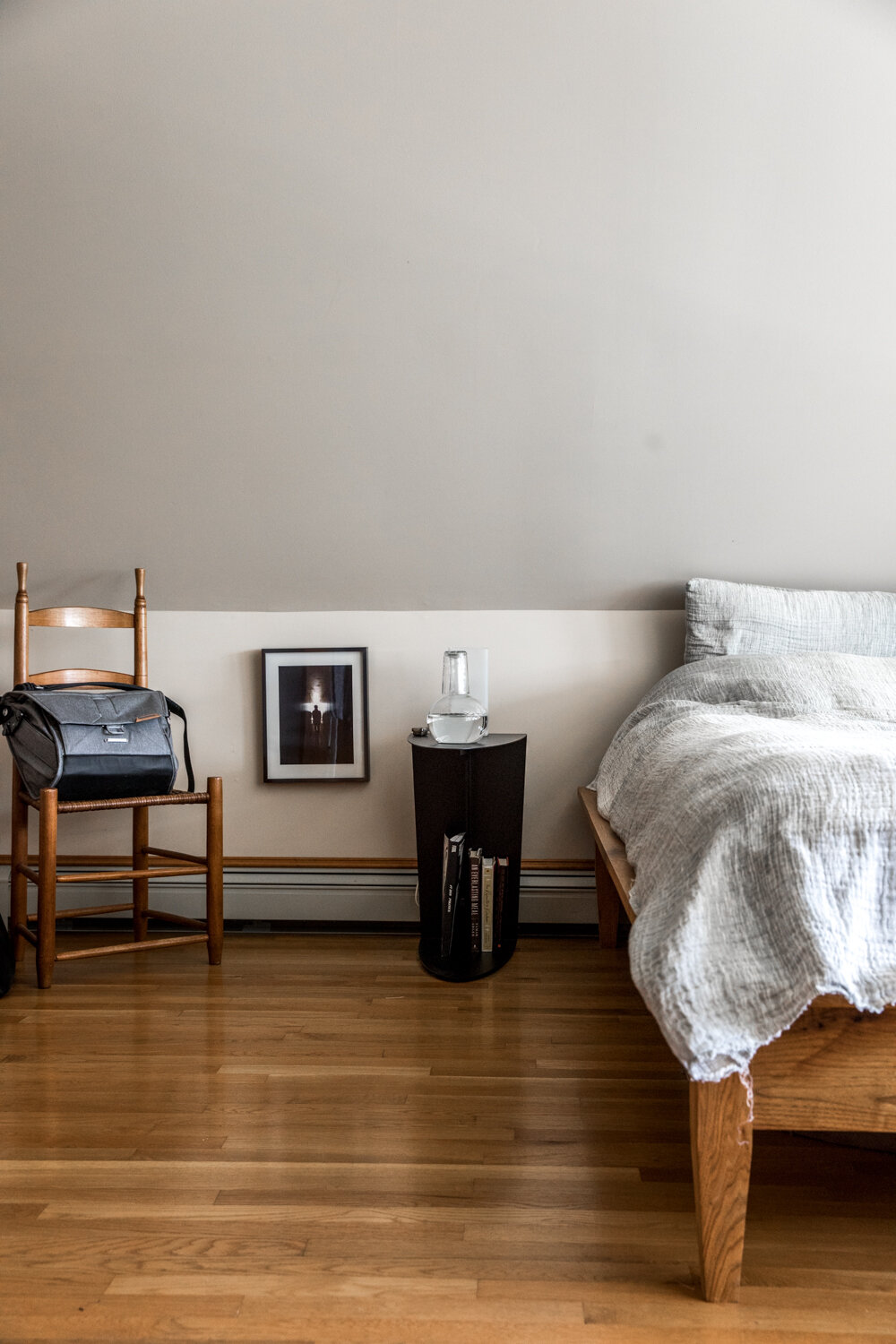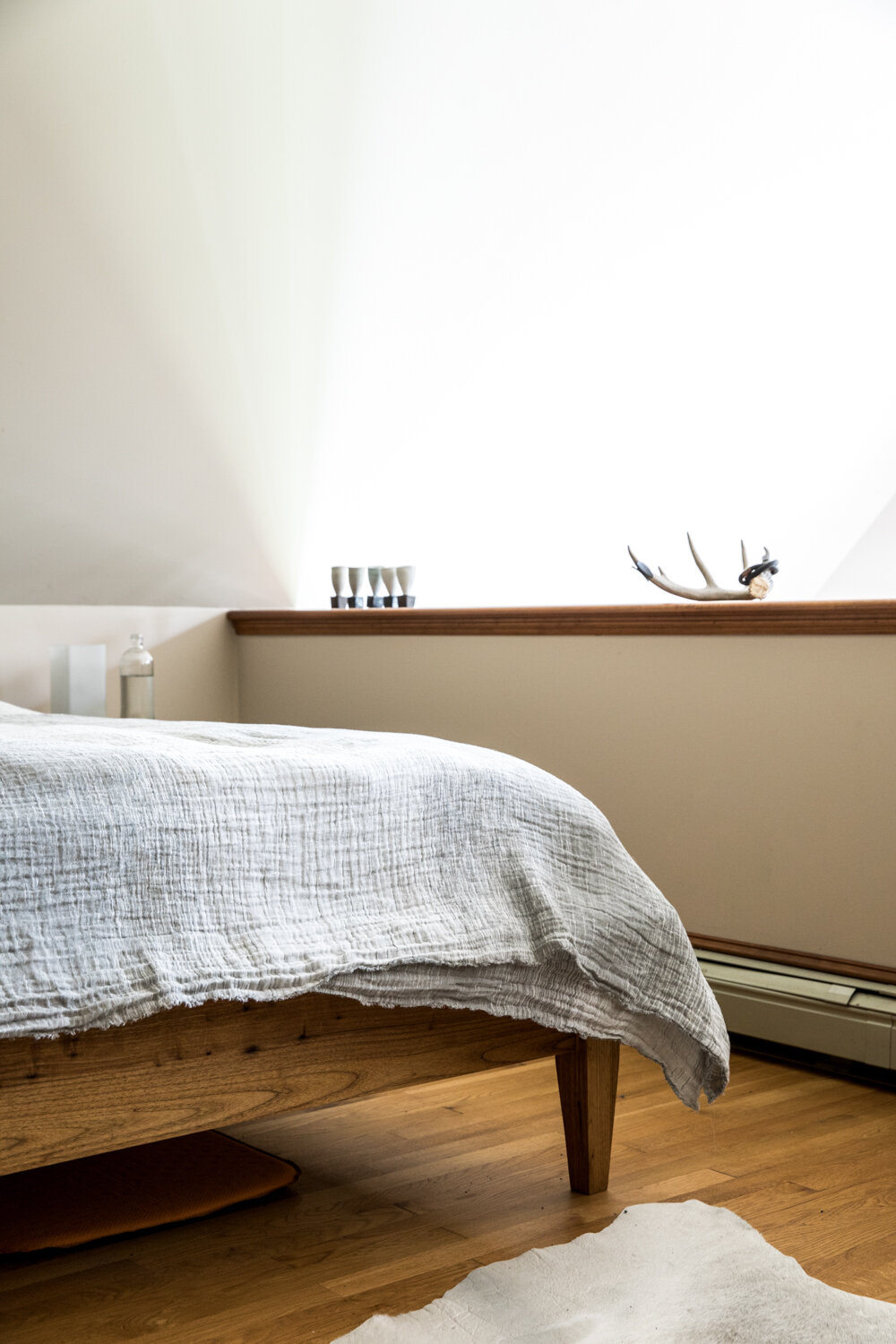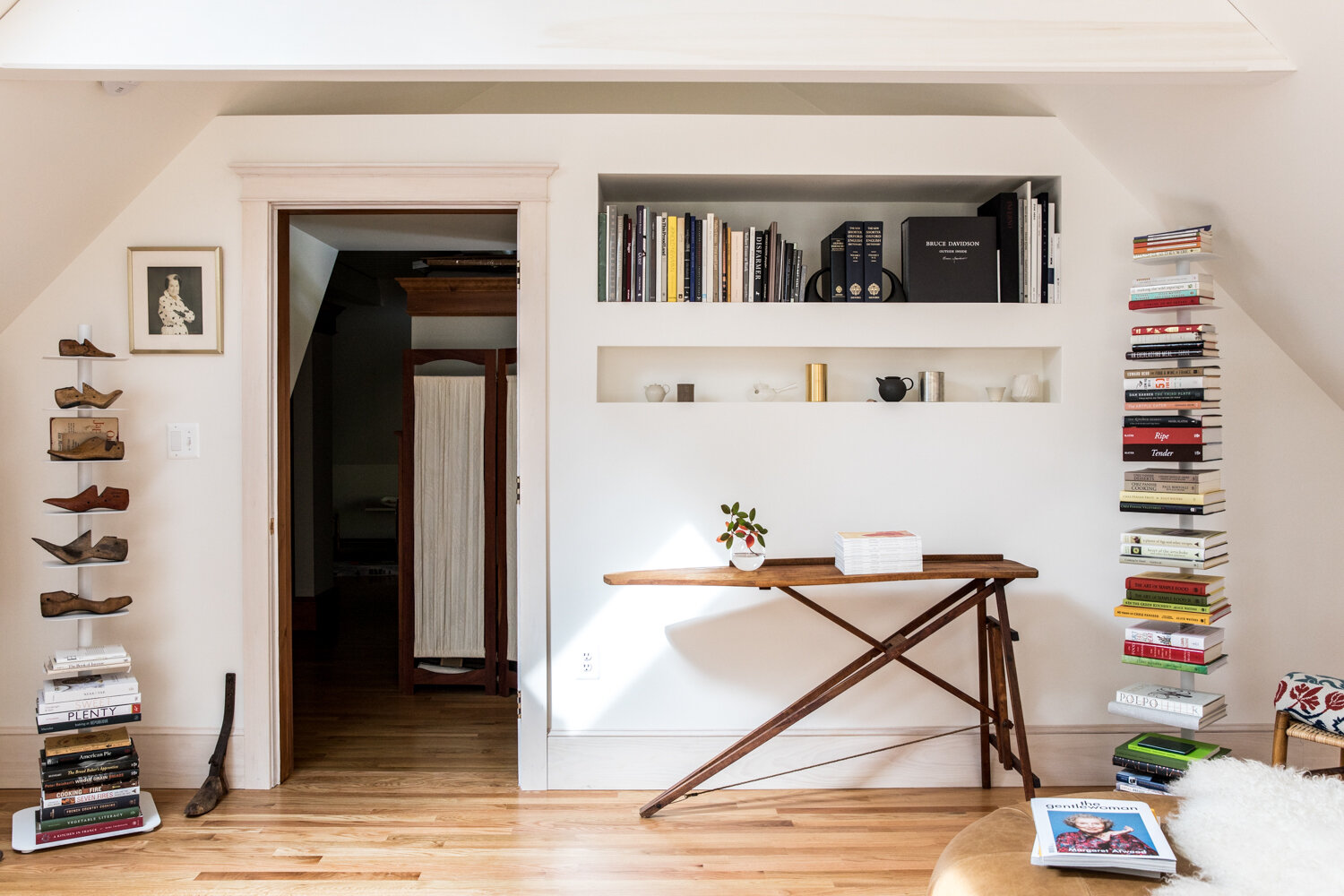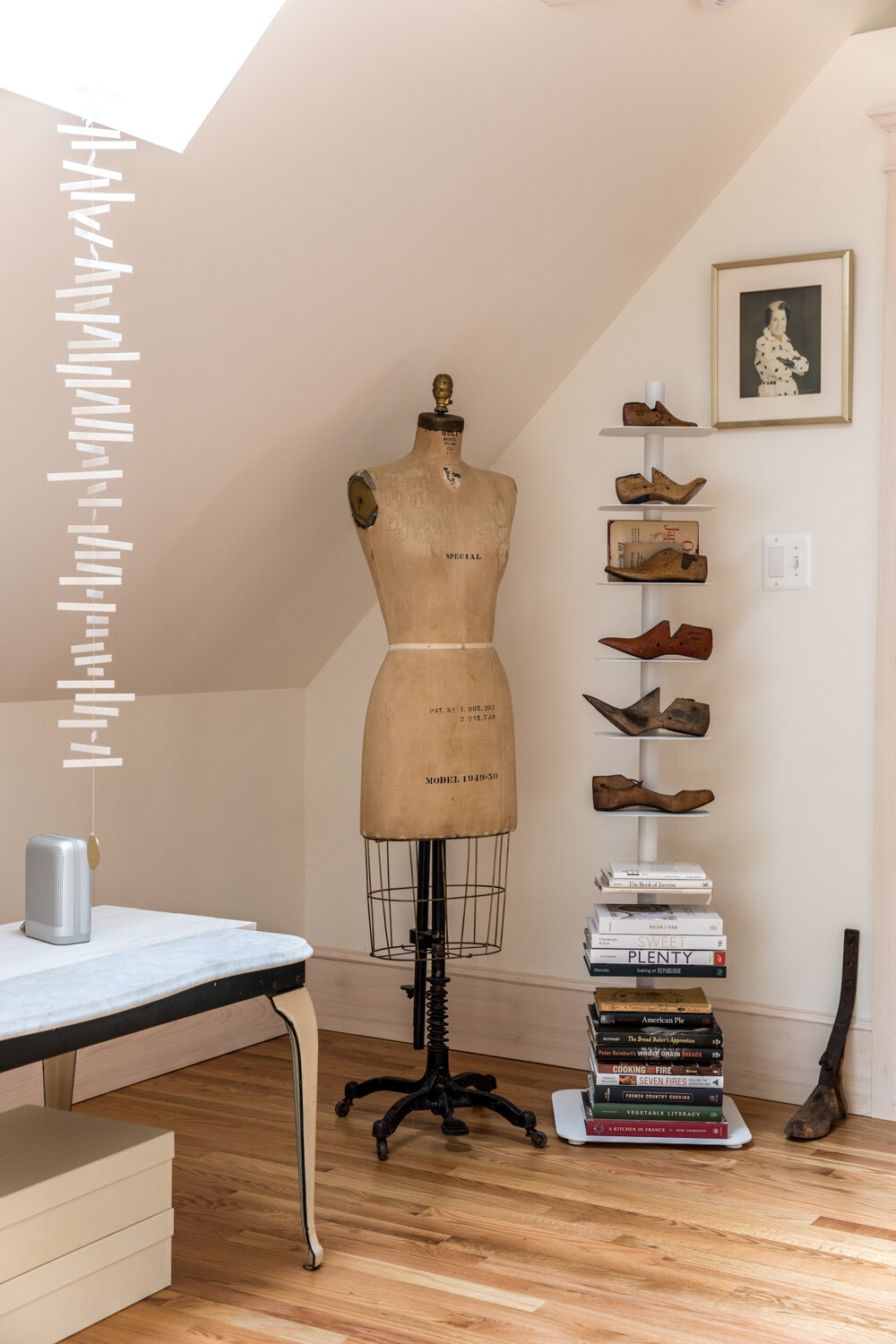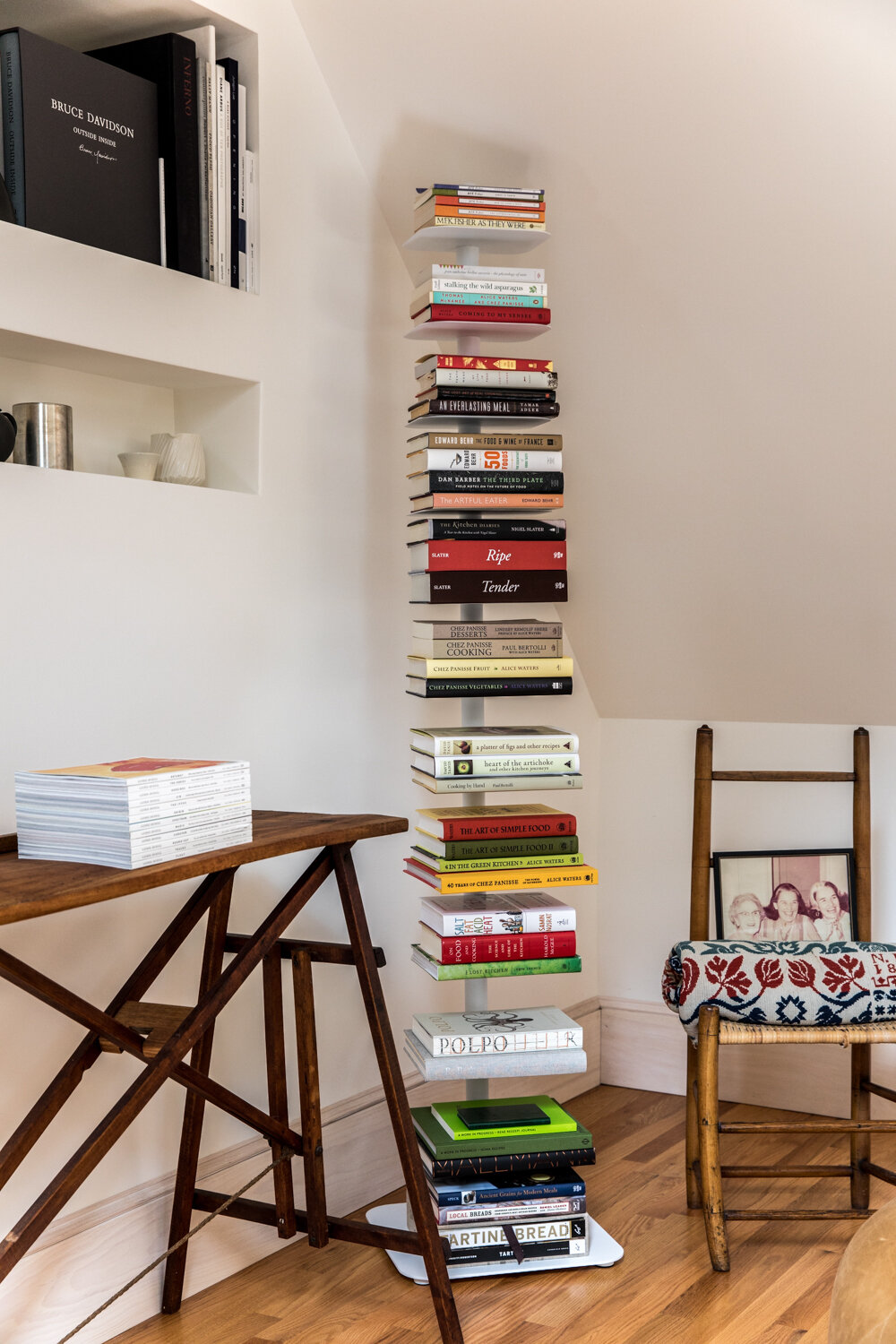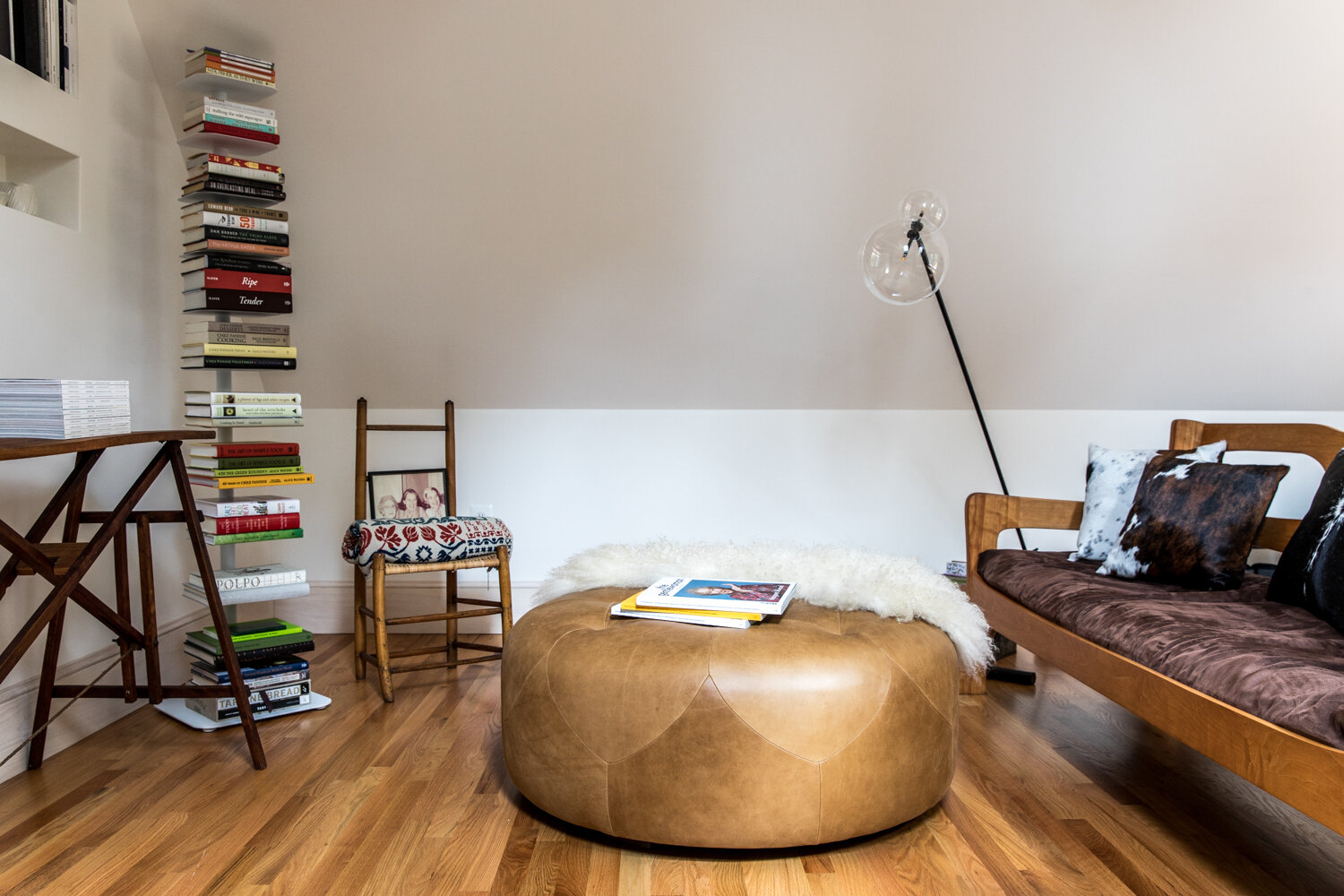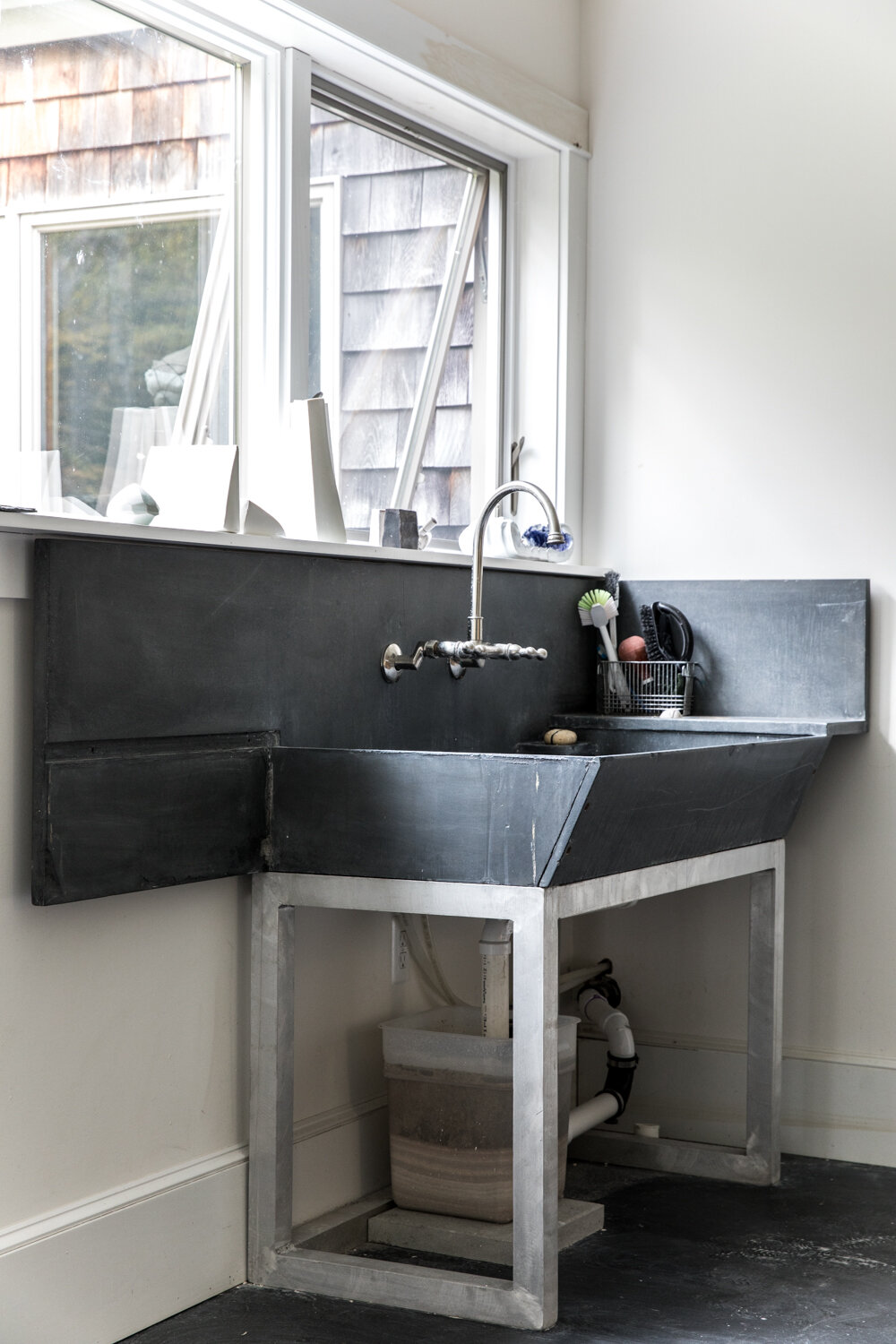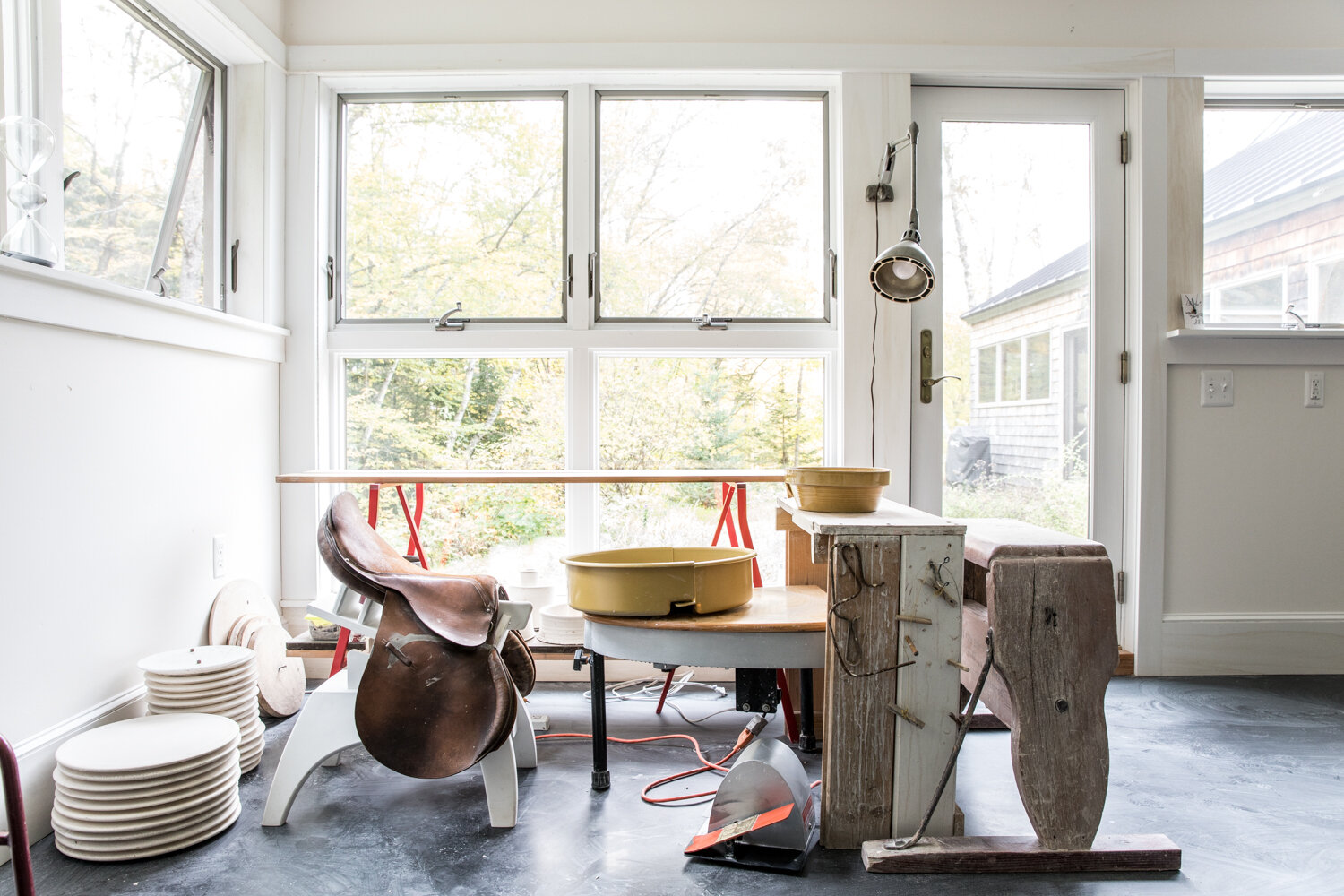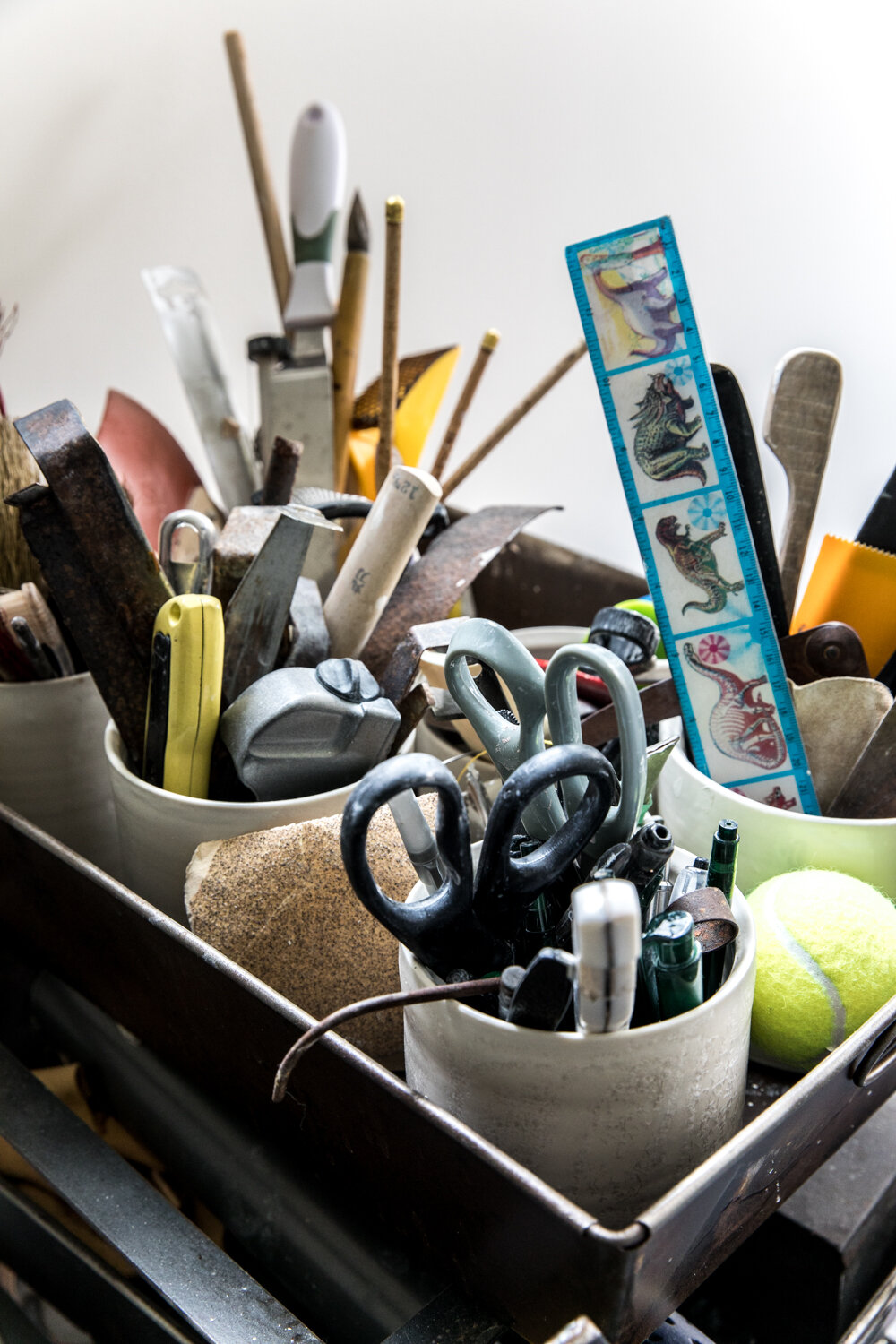Written by Rebecca Falzano
Photography by Erin Little
Hanako Nakazato and Prairie Stuart-Wolff split the year between Maine and Japan—an arrangement that fuels and fortifies each of their creative pursuits. Hanako comes from a long line of potters who made a name for themselves in Karatsu, Japan. After apprenticing with her father (but unable to carry on the family business as a woman), Hanako opened her own pottery studio, Monohanako (which means “Hanako on her own”). Her partner, Prairie Stuart-Wolff, is a writer and photographer, currently focusing on Japanese culinary experiences. The couple’s home in Union, Maine, was built in the 1990s by a woodworker with an eye for detail. Although at first they felt like visitors in a home built for someone else, they have since managed to imbue the space with their own aesthetic, proof that careful stewards can make any home their own. The house is a perfect union of quiet New England simplicity and modern Japanese pottery. We asked Hanako and Prairie to share their thoughts on living in two places, Maine being one of them.
“I think, for me, this house looks the way it does because I lived in Japan first. There, I developed a real appreciation for a simplicity of form and purity of materials.”
THE MAINERS: What connects you to Maine and to Union, specifically?
PRAIRIE: We had a history with Maine. I went to the Maine Media Workshops in Rockport and attended the SALT Institute in Portland, and we felt connected to the Midcoast area in particular.
HANAKO: We wanted to be surrounded by nature and close to culture. We’re not really city people; I think even if we had the money to buy in the city, we probably wouldn’t.
THE MAINERS: What’s the story of this house?
PRAIRIE: The house was built in 1995 by a woodworker who clearly had very detailed carpentry skills. We’re the third owners. The original owner who built it named the house “Whispering Birches” and made a model of it, which he passed on to the owners after him, who then left it for us when we moved in. It’s neat having that tie, and even though the house isn’t 100% my style—I originally had a 1900s farmhouse in mind—it’s so clear how much love and thought and care was put into it. I come from a family of woodworkers so I can see what was done in the house and what his intention was, and I really appreciate that and want to respect and honor it. Which is why it also takes me more time to say, ‘Okay we’re going to rip that out and do that.’ I was drawn to the house because it reminds me of where I came from, having parents who were woodworkers and carpenters, and particularly my mom who also did furniture making as a hobby. That’s the level of detail she would put into her home. So there’s a nostalgic connection for me.
THE MAINERS: How’d you find it?
HANAKO: We had been looking at real estate very intensely for a very short period of time. We saw everything and almost gave up. And then one day, when we were about to give up, Prairie found the listing.
PRAIRIE: I was teaching a seven-week intensive photography course at Maine Media Workshops, so we basically had those seven weeks to find a house before going back to Japan. It was the last week of the program, and Hanako had spent all summer on every real estate website and knew every listing, so at that point, we thought we’d just try again the next year. But that day, during a class break, I happened to look one last time and I said ‘Hanako, what about this one?’ and she was like ‘but wait, that wasn’t there 20 minutes ago!’ And then we saw it and saw that wall of windows in the living room and fell in love.
THE MAINERS: How have you made your mark since moving in?
HANAKO: Since the house was so well built, we didn’t have to change anything structurally, just cosmetically. We wanted it to feel more like us, so we made some small changes that had a big impact. Like painting the floor downstairs white to lighten up the wood-heavy space.
PRAIRIE: I used to be a house painter, and I know the upkeep of paint is tough and once you do it, you can’t go back. So it took a long time to bite the bullet and do it. But I’m really glad we did. It changed and brightened the space dramatically. It’s such a big blanket change, it made a big difference for me. We also took out the white tile in the kitchen and installed copper counters and replaced the sink with an enameled cast iron one that we found. My mom came up to help us with the trim when we built the addition. Because it’s such a distinct style, I wanted the doors and windows to match. She did an amazing job figuring out what kind of molding we needed and getting everything to line up.
“We’ve been enjoying the slow progress of developing a house.”
THE MAINERS: How has living in Japan influenced your style in Maine?
PRAIRIE: I think, for me, this house looks the way it does because I lived in Japan first. There, I developed a real appreciation for a simplicity of form and purity of materials. Those are things I always appreciated, but I think my taste got refined living in Japan. And then when I came to Maine and started rummaging through junk shops and antique malls, I really honed in on things that felt like that but were very New England—like the old irons that we use as doorstops and the wooden grain measures. There’s so much in New England that fits that “pure materials and simple form” aesthetic.
THE MAINERS: Who does most of the interior decor?
HANAKO: Prairie is really good at finding things. We spent a lot of time at antique shops the first year and she has the eye and patience for finding really good stuff. It’s covered with dust, but she can see the potential. I think I have a good sense of arranging items though. And spatially, I have a good sense of presentation.
THE MAINERS: How do you feel about the movement toward minimalism? Do you have any feelings about this as a “trend”?
PRAIRIE: I think anything we can do to counter over-consumption is good. My approach to purchasing things is to find something of excellent quality that will last a long time that will age beautifully and then use it—don’t constantly replace or throw things away. I think if people purchase fewer things over a lifetime and appreciate and use them and have that living history around them, I think it can be a good thing.
THE MAINERS: What is a ritual that you enjoy in your space?
HANAKO: Opening a bottle of wine after 5 o’clock. Our life in Japan is extremely busy and so coming back to Maine is like a retreat—spiritual and physical. And even though our house here isn’t particularly big, it feels huge compared to our house in Japan, which is the size of a shoe box. In Japan we don’t have much sense of privacy or separation from work. Customers will show up any time of day, without having an appointment. In Maine, my showroom is in the middle of our house, which I was worried about at first, but people come based on appointments and it’s been working out fine.
PRAIRIE: Plus, we’re here in the summer, so after 5pm, that lingering light makes it feel like there’s so much of the day left. So it feels like you’re opening that bottle of wine at 2. There’s a certain sense of luxury and relaxation, as though you’re on vacation.
THE MAINERS: What do you miss most about your home in Maine when you’re in Japan?
HANAKO: The scale, privacy, sense of space. The high ceilings in this house give such a sense of openness. I feel like the first few days we arrive in Maine, I don’t know what to do with myself. I get so excited with how much space we have. And quiet.
PRAIRIE: We live together, we work together, we eat together, we’re always together—which suits me; I like to have my person around. But I really love the fact that we can be in this house together and be off doing our own things in different places. We have no way to do that in Japan.
THE MAINERS: When you’re not working, what do you like to do in your home?
HANAKO: I like to play music. I’m not traditionally trained or anything, but it’s a hobby. When I’m not playing the guitar or piano we spend a lot of time in the kitchen around the table, which is an old sewing machine base with a soapstone top. It’s not the most comfortable place to sit, but it’s where we tend to hang out. When we have guests over, they sit on the steps overlooking the kitchen.
PRAIRIE: I love gardening. I can’t have a huge garden because we don’t get much light in the woods, but I enjoy being outside and tending to the yard or flowers—at the moment it’s the raspberry patch. We also do a lot of cooking. We eat a lot of fresh greens and oysters and good cheese. We don’t really go out when we’re here. It’s mostly summer cooking—grilled meat and vegetables.
THE MAINERS: What is your most cherished possession—something physical that means a lot to you?
PRAIRIE: My prized possessions are two pieces of furniture that my mom made before I was born. One is the oak table that’s in Hanako’s showroom and the other is a couch that used to be in the living room and is up in my office now. My mom was making a lot of furniture before I was born, and she made those and I lived with them to some degree when I was a kid. My mom has a tendency to impulsively get rid of things and I remember being a kid, like 10 years old, and saying, ‘I want these someday, never get rid of them,’ because I could see that she might at some point. So she put them in the basement for years for me. The fact that I have my own house where they not only fit but look beautiful means a lot to me.
HANAKO: Mine is the guitar Prairie’s mom made for me. Our house has pretty good acoustics so it’s really nice to play. I also love all the stone pieces we’ve collected—the slate sink in my studio, the soapstone breakfast table, and coffee table. We can’t find those materials in Japan.
THE MAINERS: What other collections do you have?
PRAIRIE: We’ve been collecting oil lamps. They burn beautifully. We also have a collection of vintage yellow glazed milk pans. For a while, I was collecting vintage wooden shoe molds. And of course, photo books and cookbooks.
THE MAINERS: Let’s talk pottery. Obviously it’s your livelihood. How do you use it in your home?
HANAKO: My philosophy of making pottery is that it’s meant to be used. It has to be functional. We have open shelving for all the pottery that we use and we have more vases than we need, so they are often out on display. They make up the decor of the house.
THE MAINERS: Do you feel a difference in your creative process when in Maine vs. Japan?
HANAKO: My production schedule in Japan is so busy and by spring, I’m burned out. So spending time in Maine is important for me—to take a break and to work less time. It’s while I’m taking a break and enjoying myself that great ideas comes in. I may not be aware of it at the time, but it comes out later. For example, when I’m in Japan making pottery, maybe I’ll take a color influence from Maine. I’m not aware of it right at the moment, but especially with color and shapes, I find a lot of them are influenced by nature. This time in Maine is really important to my creative process.
PRAIRIE: I definitely feel a different energy and a different sense of inspiration, however all of my work is focused on Japan right now, so the biggest challenge for me is to try not to be influenced by being in Maine. Some distance from Japan helps me re-evaluate or clarify the path I’m on though.
THE MAINERS: What’s a typical day like?
PRAIRIE: Whoever wakes up first goes downstairs to make coffee. We don’t have a typical weekday/weekend schedule because we’re both self-employed. I work part-time with Hanako managing her business, so I usually have the mornings to retreat to my office and manage my own work. So I try to disappear to do those things before Hanako needs me. We usually touch base midday for some kind of meal. Our afternoons are more interactive.
HANAKO: The thing about pottery is that there’s a flow—so you can’t really just stop. In Japan, I don’t take enough breaks. So when we’re here, I want to be diligent about taking a break. So I’ll play music and swim and in between I work a few hours. Even cooking doesn’t feel like a chore. I enjoy that kind of creativity and flow. Even though we are kind of on vacation when we’re here, I want to have a schedule and routine.
THE MAINERS: What is something about your home that you’re proud of?
PRAIRIE: At this point, 10 years in, I’m really proud of the fact that it feels very much like our home. The house physically and logistically met a lot of our needs and was quite lovely, but I think the home of our dreams was something else. And I think we both felt a little like visitors here at first. Because it didn’t need a lot of work, we made very gradual small changes over the years, respecting the structure as it is, but wanting to make it more personal. But now it really feels like this is our home and I’m proud of that.
HANAKO: Over the years, we developed good relationships with people. It takes time to develop a sense of belonging or community. Especially for me. Prairie had more connections with Maine; for me, I felt like just a visitor, very temporary. After we bought the house, it still felt like someone else’s. So we invested a lot of time in changing small things and I’m finally feeling like it’s ours.

